





















































Men and Women throughout the southeast have enjoyed the high-end experience H/K/B has become known for over the years. As we grow, we are delighted to share a level of expertise that can only be achieved through many years of experience and intensive training. With well over 60 years of total combined experience, our board certified surgeons are the very best in the industry and customize surgical plans to your specific needs While searching to find your cosmetic provider, look no further than H/K/B cosmetic surgery.











Get ready to begin a new, engaging chapter in your life with so many new opportunities to nurture your mind, body and spirit here

Our exciting expansion is well underway, with our new state-of-the-art wellness center now open! The wellness center features an indoor sports court, fitness center, indoor pool, integrative health clinic, salon, art and crafts rooms, a multi-purpose room for lifelong learning and much more. It’s an important part of our reimagined, whole-person approach to wellness that o ers you more options for enhancing

Join us for an upcoming event to experience the new opportunities and learn more about the limited number of new villa apartments still available. Call or visit us online to sign up














volume 13, no. 1
“I have a fancy that every city has a voice.” 336.617.0090
111 Bain Street, Suite 334, Greensboro, NC 27406 www.ohenrymag.com


PUBLISHER
David Woronoff david@thepilot.com

Andie Rose, Creative Director andiesouthernpines@gmail.com
Jim Dodson, Editor jwdauthor@gmail.com
Cassie Bustamante, Managing Editor cassie@ohenrymag.com
Miranda Glyder, Graphic Designer
CONTRIBUTING EDITORS
Cynthia Adams, David Claude Bailey, Maria Johnson
CONTRIBUTING PHOTOGRAPHERS
Mallory Cash, Amy Freeman, John Gessner, CC Kallam, Devin Lane, Linda Spitsen, Bert VanderVeen
CONTRIBUTORS
Harry Blair, Susan Campbell, Wiley Cash, Ross Howell Jr., Billy Ingram, Gerry O’Neill, Stephen E. Smith, Astrid Stellanova, Zora Stellanova, Ashley Walshe, Amberly Glitz Weber
Marty Hefner, Advertising Manager
Lisa Allen
336.210.6921 • lisa@ohenrymag.com Amy Grove 336.456.0827 • amy@ohenrymag.com Larice White 336.944.1749 • larice@ohenrymag.com

Brad Beard, Graphic Designer
Jennifer Bunting, Advertising Coordinator
ohenrymag@ohenrymag.com
Henry Hogan, Finance Director 910.693.2497
Darlene Stark, Subscriptions & Circulation Director • 910.693.2488

OWNERS
Jack Andrews, Frank Daniels III, Lee Dirks, David Woronoff In memoriam Frank Daniels Jr.
© Copyright 2023. Reproduction in whole or in part without written permission is prohibited. O.Henry Magazine is published by The Pilot LLC
















“My favorite thing about Greensboro is Latham Park. As I walk through the park around the creek and greenways I see wildlife, beautiful landscapes and lovely old homes. It gives me a peaceful feeling and reminds me how lucky I am to live here.” When it comes to selling your home, no one in the Greensboro area does it better than Sue Anne and the team at TR&M. Local experts, global reach. Call 336.274.1717 or visit trmhomes.com today.

In ancient Roman religion, the god Janus was a two-faced chap revered as the deity of doorways and transitions, endings and new beginnings — hence the origin of this month’s name, signaling a moment when we wisely take time to reflect on where we’ve come from and what may lie ahead.
This year, this notion has fresh relevance to me.
BY GERRY O'NEILL
Sometime this spring, assuming the good Lord is willing and the creek don’t rise, as my Southern granny liked to say, I hope to finish writing a book that means the world to me.
It’s about the legendary Great Wagon Road, described by historians as the most traveled road of colonial America, the country’s first immigrant “highway” that passed through the Appalachian backcountry from Philadelphia to Georgia, bringing tens of thousands of Scots-Irish, German and other European settlers to the American South, including my ancestors and quite possibly yours.
Joe Wilson, the great historian of American roots music,
once estimated that “a quarter of Americans today have an ancestor who traveled the Great Wagon Road. You can still see traces of it, a track across high ridges, a trough through piney woods, guarded by wild turkey and chipmunks, a road that was in use for a century — the most important road in American history.”
Six years ago, an idea nurtured since I was knee-high to a historic roadside marker was born anew. With some encouraging research in hand, I paid a visit to a former Navy engineer named Tom Magnuson who heads up the Trading Path Association, based in Hillsborough, where my own Scottish ancestors arrived in the mid-1700s. Magnuson’s marvelous organization researches and documents America’s historic lost roads in order to preserve and expand public appreciation of them. I figured if anyone could tell me if it was feasible or pure folly to try to find the original roadway and follow it from Philly to Georgia 250 years after the fact, that fellow was Tom Magnuson.
My timing couldn’t have been better. He pointed out that recent scholarship by an army of historians, state archivists, archeologists and ordinary history nerds like me had actually determined the original path of the Great Wagon Road and even posted an exquisitely detailed description of its route through some of the most hallowed places in America.
“The Great Wagon Road,” Tom said, when I mentioned my objective, “is the grandaddy of America’s frontier highways — our creation myth, if you like — one that explains the origins of our national story better than any other. The people and ideas that came down that road shaped the character of this nation, both good and bad. That defines who we are today.”
This was all the encouragement I needed. Not long afterwards, I plotted my route and even purchased my very own “Great Wagon” for the journey — a 1996 Buick Roadmaster Grand Estate station wagon, said to be the last “true” American station wagon before Detroit switched to making SUVs.
I envisioned a pleasant three-week cruise along the winding 845-mile road in which I would encounter all sorts of interesting characters, local experts and fellow Wagon Road flamekeepers who shared my passion for this once lost frontier highway and its unique role in shaping America.
God laughs, as the ancient proverb goes, when grown men make plans.
In fact, the journey took five years and 2,100 miles to complete, in part due to the incredible amount of history, marvelous people and stories I found along the way, but also because a worldwide pandemic struck in the middle stages of my research, knocking me off the road for almost two years.
Certain moments stand out, including meeting descendants of Founding Fathers and Daniel Boone; sitting with a fabled Lincoln historian during the annual reading of the Gettysburg Address; walking Antietam with the National Park Service’s first female battlefield guide; and playing guitar with an Appalachian bluegrass legend.
All told, I visited with — and interviewed — more than 100 extraordinary and ordinary folks from every walk of life who had their own love affair with the old road.
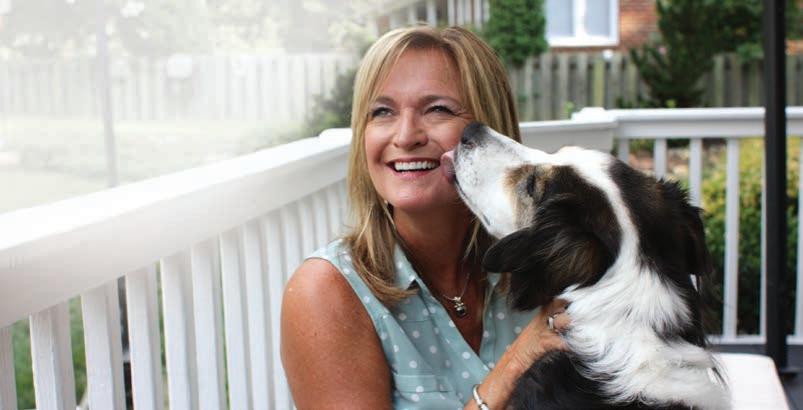
I cherish their diverse voices on my iPhone recorder because they belong to a wonderfully democratic mix of experts and colorful characters, activists and local historians, thoughtful museum curators, gifted poets and preachers, artists and war re-enactors, history nuts of every political persuasion and kind strangers whose names I simply forgot to write down.
In the end, listening to their stories about an old road that has gripped my imagination since I was a kid standing in front of a huge covered wagon in a museum brought me even closer to the country I love.
It taught me how amazingly far we’ve come — and have yet to go. Somehow, I think the god Janus would approve. OH
Jim Dodson is the founding editor of O.HenryWe are here when you need us – even for overnight, weekend and holiday emergencies. Our technicians are thoroughly background checked for your added peace of mind, and they have a world of training and experience they bring to bear for every client, no matter what the service need might be.
• On-time, 24/7 Service
• Veteran & family owned • Air quality Improvement
• High-quality and affordable heating/ac systems

• Whole-house zoning

"A spirited forum of Gate City food, drink, history, art, events, rumors and eccentrics worthy of our famous namesake"

Prettier, thinner, smarter, tidier, wealthier — you-name-it-er — it’s what we resolve to be in ’23. Or not. We know you’ve got goals for the new year and we’re here to help. We took our editing pen to standard resolutions and improved them. You’re welcome.
Wake up an hour earlier later. Get the sleep you need. Walk into work once you roll outta bed, head held high. Your boss should understand. Just make sure you’ve shaken last night’s cracker crumbs out of your hair first.
Create a savings Tinder account. Who cares how much money you have if you don’t have love? J.Lo ain’t lyin’ — “Love don’t cost a thing.”
Drink more water cocktails. 2023 is the year of the party animal.
Though the greatest warrior to fight in the Trojan war, Hector did not have much to smile about in Homer’s Iliad. For starters, his brother, Paris, stole the most beautiful woman in the world, Helen, from her husband, Menelaus, and started the Trojan war. In no time, Menelaus, along with his big bro, king of men Agamemnon, wily Odysseus and swift-footed Achilles came to Troy to reclaim Helen and Greek honor. Ten years, six months and twelve
Spend more less time with the extended family. Look around you. These people are the source of your gray hair and wrinkles, and likely the reason you’re in therapy.
Exercise more. Welp, we don’t need to edit this one. We only have to exercise once to achieve this goal and then we can put it away until 2024.
Read more books tabloids. You wanna feel better about yourself? The trick is scoping out celebrities’ most embarrassing beach photos. Instant ego boost. Organize your house CD collection. You may have to rip apart your house first to find it — and your old Sony stereo/CD player. The ‛90s are back in a big way and we can’t think of a more productive use of time.
Spend less money time worrying about what other people think. You do you.
Volunteer your time opinion. Doesn’t everyone like unsolicited advice?
There. We fixed it.
days later, 676,000 Trojans, by some accounts, had been killed. Hector was one of them, slain by Achilles, who ripped off the warrior’s armor and dragged his naked body behind his chariot around the walls of Troy three times, all while Hector’s father, Priam, and Hector’s wife, Andromache, watched. Achilles then took the body back to his tent so other Achaeans could amuse themselves by mutilating his corpse. Ultimately Priam sneaked into the Greek camp disguised as a beggar and pleaded for his son’s body, which Achilles reluctantly gave him. So why, oh why, does Hector smile on the superb and well-balanced can of Asheboro’s Four Saints’ Hazy Cosmic Punch Double IPA? Maybe because of its 8.1 percent ABV? — David Claude Bailey
“I have autism,” reads the artist’s statement of King Nobuyoshi Godwin. “I can see trees in my mind and talk with them.” The Angelfish is Having a Good Day Because It’s with the Nudibranch was painted in 2022 and is displayed in GreenHill’s Winter Show, which closes February 15. More than 100 artists who either reside in or have lasting ties to North Carolina are featured each year in the show. “King’s synesthesia and the unique sensibility he brings to his work has, in a relatively short period

Three memories stand out from visiting my grandparents’ farm in Madison: biscuits from the warming box of Grandma’s wood stove (slathered with butter and her homemade blackberry jam); the chickens doing their best to get said biscuits away from me; and walking with Daddy down a winding road to pick Creasy greens. Call Creasies what you will: upland cress, mountain greens, winter cress, Barbarea verna — these tangy, pungent greens are much easier to grow than watercress and come up wild where cattle graze. Garden & Gun proclaims them “A Mountain Secret.” Don’t try telling that to my Piedmont North Carolinian father, whose mother would cook them as a spring tonic. “As a critical source of Vitamin C and other nutrients, Creasy greens have prevented scurvy for untold numbers of people through the years,” says the U.S. Experimental Farm Network. “Stories abound of people in life-threatening situations relying on this plant for vital nutrition, from shipwrecked sailors in Europe to enslaved African people in the U.S.” Anna Anders, owner of Anders Family Farms, grows watercress and Creasies hydroponically in Northwest Forsyth County. She sells them regularly at the Greensboro Farmers Curb Market. (They’re hard to find in grocery stores.) If you want some of hers, get there early: “They sell out really fast.” Anders says she supplies Creasy greens and watercress to area chefs, who mostly use them in salads for their distinctive, peppery bite. (No less than French President Emmanuel Macron and Joe Biden chowed down on some stewed watercress at a recent White House state dinner.) Me, I’ll be tangling my Creasy greens up with some smoked hog jowl for New Year’s Day, when I’ll be hopping my John with South Carolina field peas, a concession to my Lowcountry cookmate.
— David Claude Bailey
of time, resulted in an affirmed style,” says Edie Carpenter, the museum’s director. “The artist combines planar forms in vivid colors — with overlays of repetitive mark-making.” To see more of the artist’s work and read about his artistic process, visit his website at kinggodwin.com. “King is well on his way to a successful career in the arts and has already been included in several museum exhibitions and a two-person exhibition with his mother,” says Carpenter, who adds that works by Godwin’s mother, Yuko Nogama Taylor, are also up in the Winter Show.

Info: greenhillnc.org.
Long before Elsa was begging Anna to build a snowman, the employees of Vick Chemical, then known as Richardson-Merrill, were happy to indulge. Thanks to the Greensboro History Museum for this frozen-in-time moment, circa 1967.

East Greensboro is brimming with possibilities and poised for growth and development, offering more investment options than any other section of Greensboro.

Notable names are investing on the East side, such as Publix, Kontoor, Penske, and United Parcel Service (UPS) just to name a few. A combined investment portfolio of more than $500M and 1,300 new jobs continues to grow.
Join the wave of big investment making East Greensboro the place to be.
www.eastgso.com | 336-373-EAST

Bailey Village opened on East Market Street in October 2022, offering luxury apartments, and has future plans for a grocery store, restaurants, and national boutiques.
The historic Printworks Mill is being transformed into a vibrant community hub, with mixed-income apartments and boutique retail space.

The Mill House at Revolution Mill is under construction, to include apartments, office space and restaurants.

An impressive number of corporate and industrial parks await new tenants, while the Gateway Research Park has leasing space and shovel ready pads with infrastructure and free parking.

Second Harvest Food Bank is investing in community by addressing food insecurity at its new satellite site on Phillips Avenue, providing healthy food in East Greensboro.
Mill House at Revolution Mill


















(December 22 – January 19)

Here’s what they don’t tell you about goat yoga: You become the mat. “What’s the harm in a bit of hair nibbling?” you might wonder. “Even the droppings are kind of cute.” When you’re accustomed to being the goat, it’s easy to see the world in this way. Others are less amused. This month, as you deftly scale whatever obstacles might arise on your path, try not to step on your allies’ toes. Honoring boundaries will get you further.
Tea leaf “fortunes” for the rest of you:
Aquarius (January 20 – February 18) Wear your sunglasses.
Pisces (February 19 – March 20) The remedy is within you.
Aries (March 21 – April 19) Check the mailbox.
Taurus (April 20 – May 20) You’ve made your own bed.
Gemini (May 21 – June 20) Go for the twin pack.
Cancer (June 21 – July 22) The eagle has landed.
Leo (July 23 – August 22) You’ll know the red flag when you see it.
Virgo (August 23 – September 22) Rule of thumb: Rinse before use.
Libra (September 23 – October 22) Move the plot forward.

Scorpio (October 23 – November 21) Someone needs a hug.
Sagittarius (November 22 – December 21) Just take the stairs. OH
Zora Stellanova has been divining with tea leaves since Game of Thrones’ Starbucks cup mishap of 2019. While she’s not exactly a medium, she’s far from average. She lives in the N.C. foothills with her Sphynx cat, Lyla.


























So even though this piece will sound like a news story in places, hang on, and I think you’ll catch the spirit. Maybe even The Spirit.
Recently, I heard from a woman named Joyce Powers. Never met her, but I’m a sucker for a woman who tells you that she’s 80, that she does 80 “very well,” and that she wakes up thinking about her current project, like a kid at Christmastime.
The thing that excites Joyce is the fresh approach that her Greensboro church, Presbyterian Church of the Covenant, is taking in response to decades of declining and aging membership, a challenge for many flocks.
The folks at PCOC — they affectionately call the place “peacock” — are chucking the church.
The brick-and-mortar part, anyway.
But they’re hanging onto their idea of what the sprawling Neoclassical Revival building near UNCG should be: a place to meet, to cultivate benevolent ideas and make those ideas real in the community.

Back in October, the church released a request for proposals, calling for detailed pitches on how to convert the 50,000-squarefoot structure, which dominates a block of South Mendenhall Street, into a hub of live-work-play.
Joyce and other church members can picture the current sanctuary as a performance space. They see room for nonprofit offices, a restaurant-pub. Maybe senior housing.
And yes, a smaller space that the church can lease back for worship.
They aim to sell the property, with stipulations, to the developer whose plan they like the most.
The deadline for proposals is January 27.
“We think this is unique,” Joyce says. “We haven’t heard of anything else like this.”
She credits church member Jim North for seeing what could be. After reading about the Brooklyn Arts Center — an event center and bourbon bar occupying the former St. Andrew’s Presbyterian Church in Wilmington — North visited the site earlier this year. (A story about the BAC appears in the November 2022 issue of this magazine: ohenrymag.com/the-creators-of-n-c-23.)
North told his brethren that he believed a similar transformation was possible here. That’s when Joyce invited input from Dennis Quaintance, who, along with his wife Nancy King Quaintance and developer Mike Weaver, founded one of Greensboro’s crown jewels, Quaintance-Weaver Restaurants & Hotels. Nancy’s parents were married at PCOC.
Joyce also reached out to David Kolosieki, who heads the local Habitat for Humanity and understands both the nonprofit and for-profit worlds.
Kolosieki became a paid adviser to a church committee that harmonized the vision with PCOC’s history.
From the git-go in 1916, the church — the building was designed by famous Greensboro architect Harry Barton — has been action-oriented.
The congregation hired a nurse to deal with the flu pandemic of the late 19-teens. They fed soldiers who passed through the city’s Overseas Replacement Depot in World War II.
Later, they housed a childcare cooperative, a counseling center, and a preschool for blind children.
Currently, PCOC hosts a day center for physically and mentally disabled adults. It also provides a meeting place for the Greensboro Mennonite Fellowship, as well as Unity in Greensboro.
Thinking outside the box is a PCOC specialty. Church members — about 30 of them show up on a typical Sunday — include a couple of homeless people.
“If someone needs us, we’re here,” Joyce says.
She concedes that church members can’t control everything that happens to the property down the road. Neither do they know whether the changes will draw more people into the fold, or if their numbers will dwindle and die.
Not to worry, she says with conviction.
The congregation likely will use proceeds from the sale to create an endowment that will nourish local service projects aligning with the PCOC ethos.
So either way, the church will live on, just in a different form.
And what could be more Spirited than that? OH
Maria Johnson is a contributing editor of O.Henry. Contact her at ohenrymaria@gmail.com.





Since Dylan is credited as the author, The Philosophy of Modern Song is an instant bestseller and there are reviews galore in magazines, newspapers, and online that will tell you exactly what you want to hear about the enigmatic songwriter’s literary efforts. But before committing myself to read all 350 pages, I had to be convinced that it was written by Dylan. After all, the guy has been known to mess with us. There were accusations that he borrowed lines in his Nobel Prize acceptance speech from Melville and a brouhaha about autopen-signed copies of the new book. So I plowed through the first five chapters, reread parts of Dylan’s Chronicles and watched the Scorsese film, paying attention to Dylan’s language patterns. And, yeah, what’s written in the book sounds like Dylan. His name is on the dust jacket. I trust Simon & Schuster. Dylan wrote the book.
Here’s what you need to know. First, there’s not an iota of philosophy in The Philosophy of Modern Song. If you’re looking for philosophical thought, pick up a copy of The Essential Kierkegaard. Dylan is all about pop music, and in this latest offering, he’s simply

Dave Mason’s enchanting “Keep My Skillet Good and Greasy,” originally released as a single almost a century ago, is typical of Dylan’s approach to explicating a song.
“In this song your self-identities are interlocked, every one of you is a dead ringer for the other. You’re the Dalai Lama, the Black Monk and the Thief of Baghdad all rolled into one, and the whole world is your city. You’re prowling and shoplifting, going down the East End, back where you came from, to the wilderness and brush — back to Chinatown and Little Italy — saddlebags full of barley and cornbread, rosemary and ivy, and sides of bacon in your pocket. You’re unmuzzled and unleashed, nightwalkin’ up the crooked way, the Royal Road, stealing turkey legs and anything sweet and spicy, roaming through the tobacco fields like Robin Hood, broiling and braising everything in sight.”
Occasionally, Dylan steps from behind his curtain of words and lapses into playfully preposterous insights. He claims Marty Robbins’ classic “El Paso” is a song about genocide; he attacks the divorce business; and lauds Nudie Suits and the supernatural





powers of blue suede shoes.
When explicating Waylon Jennings’ “I’ve Always Been Crazy,” he dredges up a piece of history as a metaphor: “. . . and the individual peculiarities of the human condition are sliced as thin as a serving of potato during the Great Irish Famine of the 1840s. Which some people will, no doubt, also view as politically incorrect caricature even though the potato was a cheap staple of the Irish population and was decimated by a fungus that destroyed half the crop in 1845.”
This didactic passage isn’t necessary — anyone who reads Dylan is probably familiar with the Irish Potato Famine — but Dylan can’t abandon his clever illustration and goes on to mix the metaphor with drugs, rabbit meat and buckshot: “People try different ways to insulate themselves as their nerves are rubbed raw — there are various mood-altering substances, some selfprescribed, others classified by the government and only available by prescription. None of these are precise — they are more akin to buckshot than to a sniper’s bullet.”
In the final analysis, we should simply step back and consider Dylan’s jumbled Kerouac-ish prose as one might behold Picasso’s Guernica, not so much as individual lines of text but as a holistic composition, an attempt to transfer emotion and energy without the encumbrance of form.
Even if you’re not a Bob Dylan fan — and there are a lot of you out there — you can make The Philosophy of Modern Song an entertaining and enlightening read. Here’s what you should do. Make sure your smart speaker has a subscription to a streaming music service such as Spotify, Amazon Music, Apple Music, etc., then kick back in your easy chair and start reading Dylan’s chapter on Bobby Bare’s “Detroit City.” Call up the song on your speaker. Read along to the music. Dylan’s wry, incongruous humor will impregnate your cerebrum. OH
Stephen E. Smith is a retired professor and the author of seven books of poetry and prose. He’s the recipient of the Poetry Northwest Young Poet’s Prize, the Zoe Kincaid Brockman Prize for poetry and four North Carolina Press Awards.
Building on our history of beauty and imagination, Arbor Acres is excited to announce Aldersgate Square, our newest residence rising from the center of this invigorating community.
Around here, how we evolve our environment is how we renew the vitality of our mission, which means that a splendid home of comfort, convenience, and thoughtful amenities—with lovely views and spacious rooms—is just the start

Because living well is one thing, but living with purpose and passion, among friends in a rare and picturesque setting—this is life in all its shining brilliance. Arbor Acres is forever in a state of becoming—a place where creativity shines, where generosity thrives, where the art of living blooms.
For more information on Aldersgate Square and other independent living options, please call (336) 724-7921.

Arbor Acres is a Continuing Care Retirement Community a liated with the Western NC Conference of the United Methodist Church.
1240 Arbor Road, Winston-Salem, NC 27104 arboracres.org • (336) 724-7921
If my best friends from high school and I were able to live our youthful artistic dreams we’d still be playing in a garage band called The Subterraneans. Luckily, ceramicists Mark Warren and Chris Pence, who met in high school in the late 90s in northern Florida, had a business plan. In 2012 they founded a ceramics and glassware company called Haand, which is named after the archaic Norwegian word for “hand,” and where everything is made by, you guessed it, hand. Since founding their company, Mark and Chris have partnered with restaurants around the world, including Beard Award winners and local culinary royalty like Ashley Christensen and Vivian Howard, with whom they’ve launched a special collection.

There’s an old saying that goes, “If you show me your friends I can show you your future ” If only we all had friends like Mark and Chris during high school. The best businesses, like the best friendships, grow organically from shared interest and vision, and while Mark’s and Chris’ professional paths briefly diverged after college — Mark pursued the arts while Chris worked as an accountant — they came back together over a decade later in rural North Carolina as roommates and business partners in a crumbling old mansion. (How crumbling? Let’s just say that the same bucket that caught water from the kitchen drain was used to flush the toilet.) In this auspicious setting, Haand was born.
On a warm fall morning in late November, I parked in the grassy lot outside the Haand showroom and production studio in Burlington. The 13,000-square-foot brick building was once a hosiery mill, and it still retains its industrial feel, despite the gor-

geous colors and earthy appearance of the countless handmade ceramic pieces that greet you as soon as you step inside.
I found Mark, Haand’s creative director and co-founder, as he passed through the showroom on his way out the door. He stopped and greeted me warmly with a broad smile that was nearly hidden by a thick beard. Mark very much looks the part of a potter, and he very much looks the part of someone who might enjoy living in a house where a single bucket serves as both a kitchen and a bathroom appliance. I hadn’t let anyone at Haand know I was coming, and I felt bad about dropping in during the middle of the day, but Mark didn’t seem to mind. He casually showed me around the production studio where a couple of dozen people were at work at various stations, each one marking an integral step in the process of achieving the distinct look and feel that Haand is known for.
As we walk through the space, Mark explains the process, beginning after he completes each design, whether it be for a vase, a coffee cup or a serving dish. A mold is built from each design, and into the mold is poured liquid porcelain slip. Once the piece dries inside the mold, it is removed, cleaned, smoothed with a sponge, and hand-inspected before being stamped with Haand’s logo and the phrase “Made in NC, USA.” The piece is then bisque fired and heated to 1,800 degrees, and this is where each piece gets interesting and distinct.
“Our clay body itself is what’s called vitreous,” Mark says, “so it melts at a really high temperature, and then it will become kind of liquid during a period of the firing. The clay kind of remembers things that have happened to it. So if you bump it with your
thumb or kind of move it, it might look strange going in, and then it comes out and it has melted and softened and completely shifted its form. You can’t really fight that unless you’re doing what they do in industrial kilns, which is not what we do here. There’s a deeper truthfulness that can come out of not trying to fight the process and just letting it be what it is. It’s a beautiful thing.”
There is no doubt that each piece made by the folks at Haand is beautiful not only in its design, but also in its color. After the pieces are fired they are glazed with a liquid coating of minerals that bonds to the clay, and brings a glassy and distinct color finish and texture to each piece, whether it be fern green or matte grey or one of the stunning Cloudware finishes that looks just like its namesake.


After the glazing, each piece goes into the gas kiln, where it’s fired at 2,300 degrees so that the clay and the glaze thoroughly bond. Afterward, each piece is polished and inspected before either being shipped out or stocked in the showroom.

All told, countless hands touch the pieces during the process, and every step reflects the hand of the maker who’s worked on it, which ensures that each piece, even if it’s part of a set, bears its own distinctions. Roughly 90 percent of Haand’s employees were novices before walking in the door, but each of them receives extensive training in the production process in order to maintain Mark’s vision for every individual piece.
“It’s exciting,” Mark says, still seeming struck by the beauty of the process of designing, forming and firing even after all these years. “It’s right on the edge of chaos.”
But to the layperson’s eye, nothing about the scene at the production studio seems chaotic. People of all ethnicities, ages and backgrounds work quietly, whether they’re sponging or firing,
many of them with earbuds popped in so they can listen to music, audiobooks or podcasts. Their work is accompanied by glances, smiles, nods of the head. The whole scene feels peaceful, thoughtful and grounded.
But it didn’t always feel that way to Chris, company president and co-founder, who I found after he stepped out of the office and gave me a tour around the showroom, where I immediately picked out two 10-ounce tapered mugs to take home. Chris had worked with clay since high school before forging a career as a corporate tax accountant in Jacksonville, Florida, where he often worked 80-hour weeks. It was on a trip to visit Mark in the dilapidated farmhouse that Chris truly considered reconnecting with his early passion for pottery. Mark pitched the idea of the two of them starting a business together; it ended up being an easy decision for Chris.
But those early days, rooming at the farmhouse with Mark while working in an outdoor studio took their toll on Chris, who quickly realized the differences between plowing through a 16-hour day behind a desk and the physicality of clearing brush to create more outdoor space, moving boxes of finished pieces, making phone calls and filling purchase orders.
“Moving into that house in the woods was a totally transformative experience for me,” Chris says. “I imagine that people were having thoughts like, ‘Has Chris lost it a little bit? Is he going a little crazy? He left a job he worked so hard for.’ I really looked up to Mark and relied on him to kind of show me what this new life was like.
“But I definitely remember being in the studio by myself one day and the lights were off, and it was dark. I had a real big moment of existential dread, and I thought, have I made a terrible mistake?”

For Chris, after both the success of the company and his continued friendship with Mark, those moments of uncertainty are fewer and farther between. “I’m so passionate about what we’re making,” he says.

While Mark and Chris’ primitive way of living has changed since their days on the farm, the way they make their pottery has not.

“We haven’t changed the production method at all,” Chris says. “We’ve certainly refined it and gotten better at doing things, but if you were to have been there with us at the farmhouse and walked through how we made a pot, and then you were to walk through the way we do it now, you would see there are no fundamental changes. We can make things more efficiently, but it’s still a handmade mold, we pour the clay in, we pour the clay out, we finish it, we fire it, we glaze it, fire it again, and it’s done. The process is the same.”
Their friendship is the same too.
“Mark has just always been an incredibly fun person to be friends with,” Chris says. “I think it’s a blessing for both of us to have been such good friends before the business because having a business is hard, and it can really, really be difficult on every level, whether it’s financially, physically, emotionally or spiritually. Mark has always had my back, always been there for me, and always supported me.”
It’s clear that Mark has felt the same about Chris for years. “When you meet someone like Chris, you just kind of know them in totality. Chris is one of
those people that if you know him it would be inconceivable not to want to be friends with him afterward.”
“And Mark was hilarious in high school,” Chris says, laughing. “I remember him showing up to a prom party at my house. He was a sophomore, so he wasn’t even invited to the prom.”

“Please tell me he showed up in a tuxedo,” I said.
“I think it was one of those T-shirts that has a tuxedo printed on it,” Chris says.
“It was,” Mark adds, the sudden recollection causing them both to break into laughter. “And I brought a beer bong that I’d bought on a German Club trip to Daytona Beach. It had never been used before, and I was like, ‘Let’s see how this works.’”
“That’ll be the next thing that Haand manufactures,” I say. “Ceramic beer bongs.”
“There’s a lot of demand for that,” Chris adds, and we all laugh again.

When you visit Haand or order any of their pieces online to be delivered to you, you will immediately recognize the care and attention that Mark and Chris have put into their craft. And when you spend any amount of time around Haand’s co-founders, you will say the same for their friendship.
Come for the kiln-fired pottery. Stay for the warmth. OH


Wiley Cash is the Alumni Author-in-Residence at the University of North Carolina at Asheville. His new novel, When Ghosts Come Home, is available wherever books are sold.




husband has always had a soft spot for the postal service. Since arriving here from Johannesburg, Don has marveled at the fact that American mail is delivered in a reasonable period of time.

Not so back at home, he will say, shaking his head, giving a warm smile as the postal truck pulls to the curb and delivers mail. When working at home, he is always prepared to step outside to say hello.
In South Africa, by contrast, mail can — and does — disappear. If the post arrives, it won’t be swiftly. We finally abandoned sending his family birthday and holiday cards. “Back home,” he says, snow, rain, heat and gloom of night can and will stay couriers from their appointed rounds.
He so admires American mail’s superior service that he makes a point of knowing carriers by name. Kevin is “a great guy,” Don says.
The men and women of the USPS were among his first friends in a new country.
“They pick up stamped mail right from our door!” Don marvels with genuine pleasure. “They didn’t in South Africa.”
Our first Christmas together presented a little culture shock to him, too, as presents piled up beneath the tree. His Christmases had always been more austere.
“A little something for everyone,” I explained, defending perceived extravagance.
Soon, Hershey’s Kisses appeared, piled beneath the tree. The reason? “So the postman can have a little something!”
Following a move across town, we observed Shirley, our new mail carrier, endearing herself to every dog on our block by dispensing doggie treats.
Shirley was so beloved by neighborhood hounds that howling commenced the moment the mail truck appeared. She doled out biscuits at fences and front doors as doggies up and down the street yelped with anticipation.
Don contributed to the cause, leaving Milkbones for Shirley. One pre-Christmas morning he wrote a check.
“Who’s that for?” I asked.
“Our pastel loady,” he murmured.
“For the dog treats fund,” he scribbled in the memo line.
Our what? He repeated absentmindedly, “Shirley,” he said, “our pastel loady.”
I clapped my hands in delight. Through a misfiring of a brain synapse, postal lady became pastel loady!
A spoonerism!
Tangled, inverted words and phrases were dubbed spoonerisms, thanks to Archibald Spooner, a brilliant, colorful intellectual. The legendary Oxford professor and chaplain apparently amused his students and congregants by unwittingly switching parts of words
A classic example was when Spooner misspoke during an interview, declaring “the weight of rages will press hard upon the employer.” He meant to say, “the rate of wages.”
Another misstep by Chaplain Spooner: “It is kisstomary to cuss the bride.”
Spooner’s student was denounced by the Oxford don for tasting two worms, rather than wasting two terms
One mystifying Spooner quote more Harry Potter than Oxford-speak? “You will leave by the next town drain.” (Rather than “the next down train.”)
In 1930, Spooner conflated “conquering kings,” spluttering out “kinkering congs.” Clearly, people could not wait to hear what his brain would produce next.
Even though his gaffes were widely quoted, and doubtlessly misquoted, Spooner remained good-natured. When he retired from public life, Oxford became a duller place. No more colorful clunkers.
Likewise, when the very popular Shirley retired from the pastel service, neighborhood dogs slumped, tails drooping. They went into a collectively silent, grousing funk for weeks.
Our terrier, Kip, eventually stopped gleefully racing along the fence line at the sight of each passing mail truck.
There was a sad reckoning: A fine pastel loady had passed from daily life. Missed by canines and customers alike, the world grew less colorful, a much grayer place. OH
Cynthia Adams is a contributing editor to O.Henry.
The world’s a more colorful place when we don’t say what we mean




 By SuSan CampBell
By SuSan CampBell
Evening grosbeaks are a most unexpected surprise in North Carolina during the winter months. Last month I made a similar claim about purple finches, explaining that food shortages further north would bring these raspberry-colored songbirds our way in numbers over the coming months. In fact, much to my delight, that has already happened at our feeders in Apex. But evening grosbeaks, which could be found reliably here in our state every few years, are nowhere as numerous as they were just a couple of decades ago. Therefore, they are far less likely to appear even when seed resources plummet across southern Canada and the northern United States.
Evening grosbeaks are robin-sized birds with a distinctive heavy white bill and varying amounts of yellow feathering, depending on the bird’s age and sex. All individuals have white and black wings as well as a gray crown and nape. Adult males with their yellow eyebrows and bellies are hard to miss. Immatures as well as adult females are more muted, having limited yellow feathering above with gray underparts.
Being larger, grosbeaks’ songs and calls can carry a good distance. Furthermore, they are almost always found in flocks during the colder months. So they are likely to vocalize a good bit throughout the day. You may be startled by the cacophony of warbling songs or hear their buzzy chips as they keep track of one another.
These big birds have a broad diet. As with most songbirds, evening grosbeaks feed heavily on insects and insect larvae during the spring and summer. But beginning in early fall they seek out berries, not as much for the fruit but for the seeds contained within. With their large bill and strong tongue, they can easily manipulate these sizable morsels to get at the protein in the middle. During the colder weather they can be found foraging
on seeds from maple, ash, tulip poplar and pine. It is likely that a combination of a better-than-average breeding season with a poor mast crop is causing their winter range expansion. Individuals and small groups have already been spotted in our state — all the way to the coast. I was startled to hear one calling a couple weeks ago from high in the forest along the creek at Weymouth Woods Sandhills Nature Preserve in Southern Pines. And I expect it is not the only encounter I will have this season.
Laying out the welcome mat for these handsome birds is not complicated. Of course, your odds of attracting evening grosbeaks are better if you have the native vegetation they favor. Commonly cultivated apples, cherries and Russian olives will also get their attention. Feeding stations with sunflower seeds will be a draw, of course — especially if the seeds are hulled. Additionally, they will consume peanuts and other larger nuts like pecans and even walnut pieces.
Given the size of a grosbeak, you can imagine that the amount of seed they consume on a winter’s day is not insignificant. But folks lucky enough to host them are usually willing to provide as much seed as the birds will eat. Paying the price for such special guests is worth the investment, especially if you are a Southern birdwatcher who likely will only have such an incredible opportunity once in a lifetime. OH
Susan Campbell would love to receive your wildlife sightings and photographs at susan@ncaves.com.






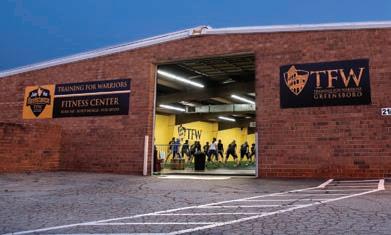


“All the world’s a stage, and all the men and women merely players. They have their exits and their entrances; And one man in his time plays many parts” — Jaques from Shakespeare’s As You Like It
at one of my fave holes-in-the-wall, Bernie’s Bar-B-Que, with former Mrs. North Carolina and onetime cheerleader/choreographer for the Carolina Panthers Dana Caulder Zimmer Bett and her son Brody. Brody is a veteran of two of the most successful Broadway touring shows in recent years and is currently performing in network television and movie productions. Brody, who already has a couple thousand Instagram followers, sang the National Anthem at Bank of America Stadium to 50,000 cheering fans in August of 2021 when the Panthers squared off against the Buffalo Bills. This might not be considered all that remarkable until you factor in that Brody Bett turns 13 years old this month.
Mentioned in previous columns, Bernie’s Bar-B-Que has the tastiest Lexington style barbecue and the most sumptuously sweet hushpuppies in town. Also on the menu is one of Dana’s guilty pleasures, Salisbury steak smothered in gravy, which she is thoroughly enjoying. While diving into our meals we talk about Brody’s astonishing journey, one that began with a startling discovery.
“We bought him a keyboard and I literally could hear him at 4 and 5 years old picking out notes on the piano,” Dana Bett tells me. “One night I heard him playing ‘Superstition’ by Stevie Wonder. I thought it was an accident, that he just happened to hit those notes by chance. And I said, ‘Can you do that again?’ And he did it again. He had just heard the song one time.”
When Brody turned 6 years old, he began performing in Community Theatre of Greensboro productions, developing

his musical “vocal-abulary” portraying, among other characters, the Grand Duke in Cinderella Kids. One of the theater mothers told Dana that Brody might be a perfect candidate for a New York casting call being held for an upcoming Broadway touring company of Finding Neverland
Based on the Academy Award winning motion picture, Finding Neverland explores the relationship between playwright J.M. Barrie and the family that inspired his creation, Peter Pan. “My mom had literally no idea [how casting works],” Brody tells me. “She just said, ‘OK, I’m gonna send a song to the guy.’”
Until the last decade or so, if you wanted to be in the business of show, you needed to reside in New York for theater or Los Angeles for television and movies. Thanks to readily available video technology, auditions today are recorded at home by the performer, then uploaded to a server.
Dana submitted her son’s demo, which impressed the casting agent. He responded with one of the tunes and some sides (scenes) from the Broadway musical for Brody to record and submit. After a few days, they were told the youngster had made it to the finals. “The other boys at the finals had to travel to New York two and three times to get that far,” Dana says, still amazed. “And I thought, this was just meant to be.”
Two weeks after flying to New York for an in-person audition, at the ripe old age of 9 years old in 2018, Brody Bett landed the juvenile lead, Jack/Michael, in Finding Neverland ’s multimillion dollar Broadway touring company. He smiles broadly recalling, “My mom literally burst into tears.”
Following a few weeks of rehearsal in the Big Apple, mother and son were crossing the country with Brody singing, dancing and being hoisted into the air on wires in front of audiences numbering into the thousands each night.
Any time a performer is under a certain age, the role is doubled up, meaning two actors are cast in the same part. “Sometimes I was on standby and the other guy would be performing because they have to watch our hours.” Dana, who was home-schooling Brody, was careful to comply with the child-labor laws of each state they were in. In New York and California, for instance, her home-schooling was supervised by tutors that were traveling with the troupe.
“We had only one ‘layoff’ in the entire tour,” Brody says, “which means we only got to go home for one week in the entire 10 months.” As the tour came to an end, having touched down in 102 cities, Brody scored an agent in New York. After repeated runs between Greensboro and Manhattan, Brody found himself vying for the role of Charlie Bucket in another Broadway touring production, Charlie and the Chocolate Factory.
There were 500 potential Charlies at that first audition. “We were like, whoa!” Dana says. “But he’s so easygoing. He’s not competitive. He’ll do an audition and never ask again. It doesn’t matter how big the job is.”
After barreling through three rounds of tryouts, producers narrowed the field down to five young actors. “You knew they were picking two because they always have a backup,” Brody says about being one of those five. “That’s when it got really real.”



And so it was that Dana found herself crisscrossing the nation with Brody portraying the titular character in Charlie and the Chocolate Factory. Embarking on a six-month run in January of 2020, the tour was abruptly cut short when COVID hit and the duo returned to their home in New Irving Park. Without missing a beat, Brody’s agent began putting him up for parts in animated TV shows as well as other voice-over projects, a notoriously difficult field to break into.
Because of the need for confidentiality in the entertainment industry, more often than not, Dana and Brody generally have no idea when and where one of his creations might be utilized. Dana recalls how early on he was asked to record a little jingle. “And it was the weirdest song.” A year later, an unexpected residual check arrived. “We looked at it and it said: Hunters. I looked it up — that’s an Al Pacino show on Amazon Prime.”
He’s auditioned for movies in which Will Ferrell, Adam Sandler and Kevin James were cast. Currently he’s the singing voice of Gil on Nick Jr.’s Bubble Guppies, Ron on Nickelodeon’s Anna & Friends, and Pando on Netflix’s Spirit Rangers. “He’s Rocky on PAW Patrol,” Dana says. “Not on the show but in the Nintendo video games. We have no idea where this stuff ends up. We just happened to see a post where this little boy was talking about how awesome Rocky was on this PAW Patrol: Grand Prix game. And I was like, ‘Oh my gosh Brody, that’s your voice!’”
When producers needed a vocal match for the iconic cartoon aardvark Arthur for a special project, they turned to Brody. A bit more challenging, he was asked to vocalize Kakeru on an already completed Japanese Anime series, Kotaro Lives Alone, for Netflix. “That was a dubbing job,” Brody notes, “which is totally different. I literally had to mimic the mouths because they animated the words in Japanese.”
Besides acting and singing, Brody loves making music with whatever is at hand. (He owns over 45 instruments.) Adept at almost anything he picks up, he mainly plays piano, guitar, drums and ukulele. Pipe organ is his absolute favorite.
To accommodate future gigs, Dana and her husband are constructing a fully-equipped recording studio on their property.























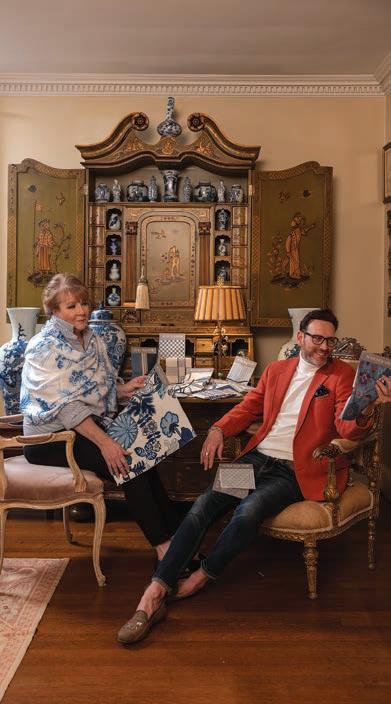

“When Disney says, ‘OK, you’re doing voiceover work this day from 9 until 4,’ they’ve got a lot of people involved.” Dana recalls a moment of panic before one of those morning assignments: “We get up and we hear a leaf blower next door — oh my gosh what are we gonna do? We can’t just say, ‘Hey Disney, somebody’s doing yard work or whatever.’” She convinced the workers to hold off on their motorized mayhem. “Having the studio is going be helpful. That’s why we’re double walling and doing heavy insulation.”
In a diner like Bernie’s Bar-B-Que, which has existed in its present location since 1950, any hint of arrogance would be glaringly obvious. Although I anticipated some degree of pretension, I detect absolutely no conceit from Brody, just the opposite. There’s not even a hint of the arrogance one would expect from someone less centered like, for instance, myself at that age. My ego would have dwarfed the sun!
It’s tempting to imagine Dana being a Mama Rose type. Instead, she treads that finely undefined line between protective mama bear and proud parent. “He can do whatever he wants,” she says of Brody’s future. “Actually, he said a couple of years ago that he might like to be a dentist. I was like, ‘That’d be a great career to have. That’s fine with me. Find something that makes you happy.’”
For the time being, “I’d like to keep doing what I’m doing right now,” Brody tells me. “Just keep spreading joy, making music and bringing smiles to people’s faces.” As for returning to the road, he auditioned for a show just the other day but, “I mean, I liked doing it at first, but then again I just love being home.” OH
Brody Bett can be found online at: youtube.com/channel/ UCUD8r2MdPWlq7exRsHH25yg and on Instagram: @brodybett

Billy Ingram is a former Hollywood movie poster artist and the author of six books, including his latest, EYE on GSO, a collection of stories (mostly about Greensboro) available where books are sold or burnt.




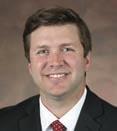




It’s a new year and the world keeps screaming that I need a new me.
I respond with a quiet, calm:
“I like the old me.
I think I’ll keep her.”
— Erienne JonesSometimes it takes a wild adventure in a faraway land to appreciate what’s been under your nose all along. Just as Dorothy in L. Frank Baum’s classic tale, The Wizard of Oz, has to be whisked away via a tornado and led on a magical adventure to the glittering Emerald City, many of Greensboro’s rising young professionals have followed their own yellow brick roads, only to discover that they “had the power all along” to find what they were seeking, right where their journey began.
Cecelia Thompson, executive director of Action Greensboro and creator of Boomerang Greensboro, acts as our city’s very own Glenda the Good Witch, helping those who wish to return home to Greensboro land safely and securely. While it takes more than the click of one’s heels, Thompson tells us that Boomerang concierge Erin Sherrill is there to make connections, set up realtors and provide resources that roll out the emerald carpet.
“Greensboro’s a small enough town that you run into people you’ve helped make those connections,” says Thompson. “To see them settled, happy and thriving in Greensboro, that’s the goal.”
We spoke to five recent “Boomerangs” who, aided by Thompson and Sherrill, have come back to Greensboro, seeing for themselves that their greatest desires are right here in their own backyards. After all, there’s no place like home.
Do you know someone you’d like to recruit back to Greensboro? Let Boomerang Greensboro help by referring them here: boomeranggso. com/boomerang-referral-form.
April Albritton stepped onto UNCG’s campus as a prospective student and suddenly understood what love at first sight was all about. After growing up in Charlotte, she knew the lush campus, friendly students and accepting faculty would make her feel at home for the next four years. Upon graduating in 2006, this young professional with a heart full of wanderlust craved change and cultivated a career in college athletics that would take her all over the country. But three years ago, Albritton (pronounced ALL-Britain) returned to Greensboro to plant roots without letting go of her sense of adventure.
As a UNCG undergrad, Albritton managed the men’s basketball team while studying kinesiology (the study of the mechanics of human movement and how physical activity and sports affect us). She doesn’t consider herself an athlete, but loves that sports “bring people together" no matter "what socioeconomic background” they come from. During her three years as manager, the team became her second family and some of the players remain her best friends today.
Despite the strong bonds she formed at UNCG, Albritton “couldn’t wait to get out.” When an opportunity to be assistant director in a Seattle university athletic department came her way, she took the leap. That “rainy and gloomy” city left an imprint on her heart and she still travels back once a year, but eventually left for a job in Charleston, S.C., followed by Long Island, N.Y.
But when her dad got sick, Albritton moved back to Charlotte, which eventually led her to a fundraising position for a Carolina Panthers player whose board she still sits on.
Four years after her return to North Carolina, UNCG called and said there was a position for her if she was interested. “I absolutely wanted a chance to go back to the place I love that started everything in my life,” she says.

In fact, shortly after her return, she knocked off a bucket list item and bought her first home, citing Greensboro’s housing affordability. “I’m making a commitment to stay down South, to stay in North Carolina,” she says. “I thought I had one more — maybe a Chicago in me — but I’m actually really happy here. And that’s a good feeling.”
After two years as director of Spartan Club, a chance to work for the City of Greensboro popped up. Although still
heavily involved in volunteer work at UNCG, Albritton left her job there to take on the position of assistant to the city manager, Taiwo Jaiyeoba (TY-woh JAH-ye-aw-bah). The two had “developed a really good rapport” when a mutual friend connected them so that she could give him the scoop on Greensboro after he relocated from Charlotte. When he reinstated the assistant position, she applied.
Sports remains a huge part of her life and she holds tight to the dream of one day running an NFL team or becoming a conference commissioner, but it’s that community aspect of athletics that reverberates through everything she does in her current role. Her “passion project”? Seeing Greensboro develop into a dynamic creative, cultural and economic magnet that would boost the fortune of its young people.
Having lived in Seattle and spent a lot of time in some of America’s hippest urbanscapes, doesn’t Greensboro get a little boring? With lunchtime walks to LeBauer Park, a steady stream of shows at the Tanger Center, UNCG athletics to cheer on, giant chocolate chip cookies from Revolution Mill’s Black Magnolia Southern Patisserie and live jazz during Wine Wednesday at Double Oaks B&B, Albritton finds the city far from dull.
But it was the 2022 NC FolkFest that marked a defining moment. Headliner George Clinton was the favorite artist of her late father. When Albritton heard he was performing, she prepared for rain or shine and ventured downtown. “I actually caught the sunglasses he was wearing during the concert, and then snuck backstage and got a picture, too . . . These are the things you can do in Greensboro.”
With so much to explore in her own backyard, Albritton is excited for even more to come. “My commitment is to watching Greensboro grow,” she says. While work at the city is often about long-range planning, she adds, “I want to stick around and be part of that before I say, ‘What’s next?’”
The assistant to Greensboro’ s city manager hopes to boost the fortune of young citizens
Ethan James knows all about what it means to be a oneman show. When it comes to content creation, scripting, filming and editing for his successful YouTube channel, The Honest Carpenter, everything you see has been done using only his own two hands. Though he lacks a team of coworkers, his online community consists of over 674,000 subscribers. And when it came time to establish a base for his operations, he heard the siren — perhaps it was Minerva — of his alma mater calling him back.
At age 13, James began working for his father in the Raleigh and Wake Forest area where they lived. “My dad was a builder and he was also a carpenter’s son,” he says. Even with the trade running deep in his veins, he vowed to never become a carpenter. He also recalls once telling a friend, “If there’s one thing I can absolutely swear to you up and down, it’s that I will never have a YouTube channel — ever.”
In 2000, James began attending UNCG, where he majored in English. During his time there, he worked at the defunct Borders’ chain of bookstores while still working construction for his dad when he was home during breaks. “I’m book obsessed,” laughs James. “In my ideal life, I’d be an author, not a video person.”
His love of books led him into McKay’s — then Ed McKay Used Books & More — to look for work after graduation. Ironically, it was his construction background that earned him the job since McKay knew he might have use for someone with his abilities on staff. One day, due to the burden of hefty textbooks, a set of bookshelves collapsed. James made repairs and “pretty soon they pulled me off the sales floor and I did handyman stuff for them for a few years.”
With that experience under his tool belt, James decided, after
all, to go into carpentry on his own, landing him back in the Raleigh area, where he stayed for seven years. Which of course means, he concedes, “I’m a third-generation carpenter.” He also teamed up with his father to create a consultancy business and started making videos to market it. But the videos took on a life of their own and The Honest Carpenter channel was born. “I never intended any of this,” says James, referring to his YouTube success. “It was an accident — a fortunate accident.”
Because of his self-made career being almost entirely online, James can live almost anywhere as long as he has a shop studio space, which he found at The Nussbaum Center for Entrepreneurship. Greensboro has everything he desires, plus the community feel and welcoming energy he craves. “There’s just a vibe here and I haven’t been able to find it anywhere else, so I came back.”
Now that he’s back, he finds himself often at one of his favorite spots, Tate Street Coffee House, writing and editing, just as he did during his studies at UNCG.
These days, he’s creating videos to speak out about a major concern — the missing next generation of builders — including one titled “Where Have All the Carpenters Gone?” He’s distraught about the lack of messaging reaching younger audiences. “There is no Bob the Builder anymore . . . they cancelled it.”
But James, who has published five fantasy books for kids already, has big dreams and a plan to solve that problem.
A few years ago, he introduced a cartoon character — fittingly named James the Honest Carpenter — on his YouTube show. James’ ultimate goal is to find a willing publishing partner to meet young audiences where they are, bringing forth the next Bob the Builder type of franchise, with a show and graphic novels that will “help kids become aware that the world they’re walking in was actually built by someone.”
If anyone can make that happen, it’s James. As he’s learned throughout his journey, “Doors open when you least expect it,” and one should never say never.

Every morning since moving into his Burlington fixer-upper on Lake Cammack in June of 2021, Afika Nxumalo (pronounced New-MALL-Oh, with a click incorporated for the “X") pours himself a mug of fresh brewed coffee, steps off his back deck into a shaded backyard abutting the shore and takes a moment before starting the day. For this singer-songwriter — who once penned a song called “Morning Depression” — it’s a welcome change from the small space living and busyness of Brooklyn, New York.
Now his morning routine consists of affirmations, some of which are written on mirrors throughout his home, as well as the meditation to “see what God is trying to tell me before the sun comes up.”
Nxumalo, who grew up in Greensboro and was once part of local hip hop groups The Urban Sophisticates and Phive, has spent almost a decade in Brooklyn and London launching his solo career. Eventually, this “Grimsley kid” landed himself a spot on NBC’s Songland.
When he was first in talks with producers, the plan was to use a song titled “Neverland.” But as Nxumalo can only assume, the infamous Leaving Neverland documentary came out around that time and the song was dropped. He didn’t hear from Songland’s producers for a while, but at his birthday celebration with friends that year, he chose to raise a glass and give thanks for making it that far.
As he’s learned throughout his life, when he lets go of the outcome, the universe responds. Just two days after that toast, he received an email that the show wanted to use another song, “Chosen.”
“If I had one song in my entire catalog that I would like the public to know me by,” he says, “ . . . it would have been that song.”
Whoever won the episode would have his or her song played on the trailer of Hobbs & Shaw, a Fast & Furious spinoff. He didn’t win, but it turned out to be a blessing in disguise. “Chosen” caught the ears of Warner Brothers and it was used in the trailer for Judas and the Black Messiah
Nxumalo says that if he’d had the chance to sit down with
God and was asked to choose which trailer he’d prefer his song accompany, his answer would have been the one he got. “God, you know me!” he exclaims.
What a gift he was given, he muses, to be recognized for a song that expresses who he is an artist. And now he hopes to share that feeling with other aspiring singer-songwriters. “I really hope all artists get to have some form of the universe saying ‘yes’ to them in that way,” he says.
The lake house he’s living in began as a plan to form an artists’ retreat, a “Muscle Shoals type of spot,” where he could cultivate songwriters, but when his Brooklyn landlord began rent renegotiations, he decided to make the move into the property.

Now, he’s got his sights set on bringing his knowledge and expertise to the local community through Pop College, his music education company that he dubs “The World’s Only Ivy League Songwriting School.” His workshops — which he hopes to host at Revolution Mill or Transform GSO — would include songwriting for artists, songwriting as team building for businesses and even songwriting therapy, a format he’s led before in New York.
The songwriting therapy model works so well, he says, because it “has a latent effect of turning something so painful into something so beautiful” and connection is built upon “shared identity and shared experience, but especially if that shared experience is shared suffering.”
As he looks out onto Lake Cammack, a head full of visions for his future, he says, “I’ve been doing a lot of soul-searching out here, like, how do I want to spend my life?”
Almost answering himself, he says, “All I have to do is be me and that’s my unique selling point. Ya know, that’s it.”
A singer-songwriter tunes into himself in order to help others
From the time she was a little girl, Brandi Nicole Johnson was clear about what she wanted from life, to the point of planning her own birthday parties a year in advance. She’s a natural leader who knows what she wants and doesn’t settle for less. In fact, it’s that strong sense of self that first landed her in Greensboro in 2005.
An only child from Butner, Johnson dove into her college search with “really weird requirements.” She knew, “I didn’t want to share a bathroom . . . and I really preferred to be in a room by myself.” UNCG, it turned out, ticked off many of her boxes, and although she didn’t get a room to herself she was able to room with someone she knew, a fellow Girl Scout.
During her senior year at UNCG, Johnson had an opportunity to do a work study with the community organization, National Conference for Community and Justice of the Piedmont Triad, which ended up launching her career in leadership development.
Unfortunately, illness took Johnson back to Butner for a few months, but she once again returned to Greensboro, this time with a full-time job as membership services manager for Girl Scouts Carolinas Peaks to Piedmont. She’d grown up in the organization and, over the years, has earned several accolades and awards which she attributes to how she came to understand how important leadership is.
“It’s in the [Girl Scout] commitment of making the world a better place,” says Johnson, “and I think for the world to be a better place we need to have better leaders.”
After a year-and-a-half at Girl Scouts, what Johnson thought was her “dream job” opened up at the Center for Creative Leadership. She’d first learned of the organization as a college junior and had “made it my mission” to one day work there, so she applied. While she didn’t land that role, the hiring manager was so impressed that she called Johnson and told her about another position that hadn’t as yet been posted. “Interested?” she
wondered. “Heck, yes,” Johnson replied.
After spending much of her career at CCL, a role she’d dreamed of taking on — executive director — took her back to Butner. She left Greensboro for what she now calls “the most painful career experience” of her life.” After growing the organization and leading it through tragedy, she says, “I was tired, so I took four months off.” She watched Dr. Quinn, Medicine Woman, binged on Chick-fil-A waffle fries and finally said to herself, “Brandi, you need a job. You gotta figure this out.”
Never lacking gumption, Johnson founded her own people development brand, Estella Elaine (named after her grandmothers). She’s also worked for Red Hat, WeWork — she notes, “before we saw the documentaries on Apple TV!” — and DoorDash, all while still running her own business and working in an on-call capacity at CCL.
With her last corporate role, Johnson was supposed to move to New York, but relocation never came to fruition. Now, Johnson says, “many companies are saying the future of work is flexible” and she decided to take advantage of that.

Johnson began to weigh living options and found her way back to Greensboro, citing the cost of living as a big draw. She now works out of the comfort of her home. Plus, she says, “The people here have a different vibe. There’s a warmth that I love.”
In 2021, Johnson purchased her first house, a four-bedroom, which she jokes that she never needs to leave, surrounded by an abundance of her favorite restaurants that will deliver right to her front door.
And, as a bonus, the Gate City is ripe with opportunity for Johnson to put her skills to work. “I can see me becoming more of a philanthropist, getting involved in venture and whatever that looks like here, really thinking about how do we invest in talent development and growth in a meaningful way.”
All roads lead back to Greensboro for this leadership development expert
Like many young people who are born and raised in one place, Elijah Cone couldn’t wait to venture out into the world upon graduating from Greensboro Day School in 2010. After living in the cosmopolitan cities of both New York and Los Angeles while beginning what would turn out to be a successful career in digital media, he ultimately chose to return to his childhood roots for lifestyle opportunities that could’t be found elsewhere.
Shortly after YouTube emerged as an online platform, Cone, then a teenager, learned how to edit video on his computer, tapping into a “trend that has only accelerated in the last 10 years.” Interest piqued, he earned a degree in film, cinema and video studies from Wesleyan University in Middletown, Connecticut. Since graduating in 2014, Cone has worked for both the NBA and Fox Sports, editing and producing video, but it’s his current role as Crooked Media’s director of digital development that enabled his return to Greensboro to be closer to his family.

As the fifth hire at Crooked Media, Cone has been with the brand and worked in its Los Angeles headquarters on podcasts such as Pod Save America almost from the inception. But in 2020, he says, the pandemic “made remote work a necessity for a lot of places and for my company for a long time,” which meant he could work as easily from Greensboro as anywhere else. “The [film editing] industry has changed so you can do it anywhere with your own tools.”
With a soon-to-be bride — also from North Carolina — by his side, he made the decision to move cross-country back to Greensboro in search of a more “rounded life.” Los Angeles offered “so much to do and see,” but Cone and his fiancé, Daixi, knew they wanted to start a family. Envisioning life with small children in California, he says, “You’re in this big, expensive city that’s great, but you can’t really experience it.”
“My hope for my life in Greensboro is much more family — not just starting my own,” says Cone, who recently bought a home with his now wife. He looks forward to spending time with his parents, Ed and Lisa. “My mom went through a very long battle with cancer and now she’s on the other end of that . . . [My dad]
was there taking care of her. It feels like they’ve been through a lot.” Being back in the city where he was raised might one day, he says, provide the perk of “getting free childcare.”
While Cone has spent more than half of his career with Crooked Media, he says, “I have a great relationship with the hosts of the show [Pod Save America] and people that work at the company, but you can never tell.” If things changed tomorrow and the company wanted him back in Los Angeles, what then?
“What makes me confident I could continue to be successful is connections outside of Greensboro, people I’ve met and people who know what I can do, what my skill set is,” Cone says, adding that he could probably work remotely for one of them. “But I also know that there’s this path for potentially bringing what I do to people here.”
With Greensboro’s growing entrepreneurial spirit, Cone recognizes that he could start his own business that would benefit other small business-owners. “Giving people who are super talented around Guilford County an option to stay here and not have to go out of state would be great.”
But he also wants to give back “in the most literal sense, in the charitable, volunteer work capacity.” Cone, who is the great-greatgreat-nephew of Moses Cone acknowledges how Greensboro has been “incredible” to his family. Reflecting on his time away, he says, “It feels kind of selfish to get all the great things from this city, then pack up and leave.”
Plentiful parks, quality of family life and opportunities for business and philanthropy are just some of the reasons Cone felt the pull back to Greensboro. “Look, if you have a great option of living in a place like this where your life is well rounded,” says Cone, “why not try? Who knows if it’s the right call, but I am comfortable taking that bet.” OH
A Crooked Media big city dweller seeks a more rounded life
Our dueling psychics forecast the year ahead

Five years ago, if you’d told me that I’d be staring into dirty teacups for a living, I’d have asked to have a bite of your brownie. Yet, here I am. Getting intimate with a wet clump of tea leaves shaped for all the world like a great, prehistoric chicken. But more on the bird and its prophecies later.
A brief backstory for you first.
I started divining with tea leaves quite by accident. It was an ordinary Sunday in 2019. I was cradling a warm cup of tea — a loose-leaf pu-erh from my favorite aunt — and Lyla was curled up beside me for Game of Thrones. (Much too grisly for my taste, but Lyla lived for that show. You should have seen how she’d twitch and chatter at the screen, whiskers bristling. Scratched the high heavens out of my couch, too. But I digress.)
There I was, sipping the last of my brew when I happened to look down. Staring up at me from the bottom of the cup was a face not unlike that of the Virgin Mother, though undoubtedly more seductive. As I gazed back, trying to place those immaculate features, I noticed the two fish-like tails encircling her like an ouroboros. That’s when it clicked. My tea leaves were shaped exactly like the Starbucks siren. You know the one. Crown, flowing locks and the like.
Well, this is when I started feeling dizzy. Not two minutes later, during a celebratory scene at Winterfell, I saw it: the iconic white cup famously left on set. The siren was calling to me. I took it as a sign from the cosmos.
The Game of Thrones howler marked the first of many oracular visions I would receive while drinking tea. Although I knew nothing of tasseomancy (divining with tea leaves), a sixth sense was awakening within me. I began studying every tea-ringed guidebook I could get my hands on. Eventually, I even sought out a mentor — a third-generation “tea-seer” whose childhood tea parties, as you might imagine, were not about the crustless finger sandwiches. Here’s the part that still makes the hairs on my arms rise: She’d been waiting for me. Had seen my name emerge from a puddle of red rooibos.
“Tea-seeing is your destiny,” she told me, sending an affirmative shiver down my spine.
I could feel it in my gut. A deep knowing. Couldn’t fight it if I tried.
Like all forms of divination, the clarity of a tea reading hinges upon the purity of the seer’s intention. In other words, it must never be used for selfish gain.
The ritual itself is quite simple:
First, select your teacup. Bone china is nice, but a simple cup is often best. Just be sure it has a handle. And a saucer. Minor details, really.
Next, add a pinch of loose tea leaves. Some seers swear by oolong, but I’m a sucker for the herbal blends. (I try not to swear.)
Pour your hot water — careful not to scald the leaves — then give it a minute or three.
Now, contemplate your question as you sip the tea, slowly and thoughtfully, straining the bits with your teeth. Once you’re staring into a pool of tea sludge — “The Mystery Mire,” as I like to call it — there’s a bit of swirling involved, an inversion, then more swirling.
Finally, you must let the tea speak.
Which brings me back to the chicken in my cup . . . well, almost.
Considering how the last couple of years played out, you can imagine my hesitation to pry too far into the future. But as my mentor likes to say, “It ain’t all about you, Sweetheart.” She’s right, of course. It ain’t about me. Which is why I asked for a glimpse into 2023. Perhaps this reading is for you?
In any case, I opted for a soothing blend of tulsi, kava and rose hips to steady my nerves. As I swirled round the mire, I whispered a simple prayer: Que sera, sera.
Whatever will be, will be.
For better or worse, here’s what the tea says:
Near the rim of the cup, which indicates the present, is what looks like a bird’s nest cradling a single egg — a very good omen. Could it represent a new relationship? A new vision? A financial
Concerned how 2023 will unfold?
No worries, star children. We've got the psychic skinny on the year ahead from two of our favorite soothsayers. That’s the good news. The bad news? They can't seem to agree — on anything.
boon? Give thanks. You know what this is about.
Not far from the rim — the near future — I’m seeing what’s either a cattail or a rattlesnake. (I know, I know. The range of interpretations can be all over the map. You get used to it.) If it is, in fact, the reed-like plant, suffice it to say that someone’s looking out for you. An ally. Alternatively, the rattlesnake asks that you listen to what your fears are trying to tell you. Perhaps you’ll be surprised to discover what’s behind — and just beyond — them.
A bit further down the cup — late March? — I’m seeing a heart. Love is surely on the horizon. But more importantly, love is already within you. Now is a fertile time to focus inward. Cultivate what brings you joy. This is your path to lasting happiness.
There are several animals in this reading: A bat with a damaged wing (check the attic); a cockroach (check the basement); a fox (keep an eye on the aforementioned egg).
As for the big-ass bird? I can hardly believe its auspicious posi-
tion! The bottom of the cup? Highly favorable. But what, exactly, is it trying to say about the year ahead?
Well, as I mentioned earlier, the bird is ancient-looking. A prehistoric “wonderchicken.” Chickens are believed to represent good fortune. That this particular fowl resembles a beast that might have pecked and scratched upon the Earth millions of years ago gives it an unusual twist. I’m getting the sense that this year will evoke some kind of primal awakening within each of us. Something that our ancestors knew in their bones. Something we buried long ago. A nugget of intrinsic value.
More will be revealed as the year unfurls. That said, when this “remembering” occurs — and I’m not sure what stirs it — we’ll have a choice: Use it or lose it. Which, dear reader, will it be?
— Zora stellanova_ _ _ _ _ _ _ _ _
Update, Star Children:
I moved to the Happy Hills trailer park two years ago. Can you hear my snort? Happy Hills, my happy ass! Long story short, my beau and I lost our lease. And that’s when our problems began.
My ex, Daniel P. Justice*, caught me in a weak moment with my roots showing. Vulnerable. I caught sight of myself in a mirror, grays popping, one of my knee-highs with the elastic shot, sagging down like a worn-out grandma. Ironic. I was once considered very good looking.
But I couldn’t find my usual hair dye during COVID! Or knee-highs!
Dan suggested we just try dropping out. He was convinced we were being bombarded with microwaves when he started losing his naturally curly hair. Then, the Cubans shot microwaves at somebodies somewhere. Ironic, I said to Dan, halfway agreeing with him.
So, we had a yard sale — outside, socially distant, all that — and I let go of all my Hummels and Beanie Babies. A low point, having spent my inheritance on fine collectibles.
A legacy, right down the drain! Don’t get me started. But back to that RV thing. What started out as a big-time adventure wasn’t. For example, during lockdown, people started hoarding toilet paper, alcohol and peroxide, not to mention canned goods. Well, in an RV, there’s nowhere to hoard. Or hide.
We began living a one-toilet-paper-sheet-at-a-time reality.
If you have IBS like moi, or just a gassiness problem, too durned bad. RV life is the death of mystery and romance, I am here to tell you.
Wherever you go, there you are, just worse looking.
Lockdown was Y2K squared. On replay.
Lady Destiny can and will track you down and kill you with experience.
But back to life advice: If you go off the grid, don’t do it during a plague. Sketchy internet and TV. One little can of Planters, GI problemos and one tee-nine-sy toilet between the two of you. And a boyfriend — whose hair is falling out — constantly griping about privacy. Seriously? We ain’t got none when I can lean over and touch the other side of the RV with my nose. And who in bloody HE double L is surveilling us? It wasn’t like we were Kardashians or something.
So ironic it makes my stomach cramp up just writing about it.
It didn’t take long for us to blow all my fine collectibles money on essentials.
There was no possibility of giving in-person readings, given what Dan calls The COVID. Like he insists on calling Walmart The Walmart. And with the general public in the USA getting angrier and stranger.
Understandably, I was leery of meeting strangers in the Happy Hills camp site woods for picnic table readings.
Most especially when good fortune was in as short supply as toilet paper.
Then my chakras got all blocked up and nothing whatsoever flowed out of me but blankness. I sat still, waiting, looked into the crystal ball.
And so on and so forth.
Looking into my crystal ball was like awaiting the results of an at-home COVID test.
*A deliberate irony. Name of my ex changed because of a court order. The ex has moved back in with his Grandma, and I remain temporarily domiciled at Happy Hills for the immediate future.
Nothing. No little pink line. It was a total whiteout. Spirit could not get through to me. So, I spent a whole lot of COVID like that, eyeballs drying up from staring.
To my mind, the universe was deliberately on lockdown.
Forecast for 2021: crystal ball cloudy with a 100 percent chance of ongoing storms.
Forecast for 2022: If you can believe it, 2022 looks worse than 2021. Strap yourself in.
So, I just stopped altogether, and tried my hand at writing a memoir: Fortunes and Misfortunes

Then, early one morning, I swear, when the sun was just peeking over the tippy tops of the trees came something — a message. Crystal clear. An epiphany!
Birkenstocks.
Just that. It was like “Rosebud” in Citizen Kane.
First communication from the astral plane in months, and it was the name of a shoe that resembles a potato.
I didn’t know what to do with that, so I shook it off. But after some Nescafé transformed me into a human, I decided just one more time to attempt a reading. And spidery letters appeared in the ball, clear as Dan’s shiftless ways: B, I, R, K . . . Yeah. Birkenstocks!
What could that portend?
Well, I had been wearing my Birks during the COVID, living in this stupid little cramped RV. Wearing sweats, day in and day out.
Was Spirit telling me to get more comfortable? Was it saying the opposite, time to stop being so comfortable?
Or, was Spirit saying, you are too damned poor to afford genuine Birks? Buy The Walmart knock-offs.
(Or, was Spirit saying potato shoes and RV life are as good as it’s ever going to get for you, Astrid Stellanova?)
I can’t tell you, because I don’t even know myself.
Meanwhile, a blind psychic in India has been laying down a whole lot of hard-to-swallow stuff. And none of it was rosy.
If you’re reading this, you are a fellow survivor of 2022, and a few things have, at long last, come through. Call this my free reading for all of you outside the Happy Hills Park.
Star Children, this much finally has come clear to me. It don’t matter if death is imminent, or you’ve got a hot date. Either way, Honey, you’re getting laid.
Speaking of which: Death row meals aren’t something only inmates should think about. What do you love and need? And if you have the power to make it happen, Sugar, time’s ticking like that gator that swallowed Hook’s clock in Peter Pan.
And while you’re at it, think about humility, you attention hogs out there. So full of yourselves! Time after time, we take credit for too much. We stand on the shoulders of everyone in our ancestral line, those who have delivered us to this point in time.
Turns out somebody else loosened the pickle jar lid a lifetime ago; you just opened it.
And if anybody out there can help this sister out, let me know what the H-E—double L you think Birkenstock means. OH
Still Living the Mystery, — a strid stellanova
In the Miriam P. Brenner Children’s Museum, Frank Brenner and I make our way along “Main Street,” a play exhibit where murmuring gaggles of kids, parents and grandparents are scattered.
Some are sitting on kid-sized furniture, others crouching on the floor arranging big wooden blocks of various shapes.
We watch a toddler make her way up steps to an airplane cockpit with a yellow slide. She zips down to floor level, giggling.
Just down the “street,” a boy asks his mother what she’d like on her pizza.
“Mushrooms,” Mom answers.
Her son proudly takes a couple sliced-mushroom replicas from a bin to add to his creation, now ready for the tiny “oven” in the kid-sized “pizzeria” where he’s playing.
You get the idea. The children’s museum is a place for handson, experiential learning.

And it’s just plain fun.
Brenner and I continue through the doors of a real kitchen with big appliances and wide aluminum sinks to a meeting room with a wall of windows looking out onto Church Street and the Greensboro Public Library.
“Honestly, I didn’t know what an asset this place was until I brought my two-year-old granddaughter in here,” Brenner says. He describes watching his grandchild happily push her kid-sized cart along the aisles of the little grocery store on Main Street.
“That was the eye-opening moment for me,” Brenner says.
And it turned out to be a major moment for area kids.
The initiative for establishing a local children’s museum came from the late Jerry Hyman, a successful businessman born and raised in Greensboro, the son of Jewish immi-

A mother’s lasting legacy at the Miriam P. Brenner Children’s Museum
grants from Hungary and Lithuania.
“Everybody called him ‘Pop,’” says his son, Mark Hyman, who practiced dentistry in Greensboro for 32 years and now lectures nationally on the business of running successful dental practices.
“Pop saw children’s museums in San Francisco and other U.S. cities, and wanted to create one in Greensboro,” Hyman recalls. “But people told him it wouldn’t work.”

Undaunted, Hyman called on the late Cynthia Doyle, a local legend in civic duty, volunteerism and nonprofit fundraising.
“She told Pop to come back in six months,” Hyman says.
Doyle reached out to a network of individuals from the Leadership Greensboro Program. They would go on to serve as the steering committee for a children’s muse-
um capital campaign, led by Doyle. Three years later, in 1999, the Greensboro Children’s Museum opened its doors at 220 North Church Street, recognizing Jerry Hyman as cofounder.
“Pop wanted a downtown location so the museum would be accessible to children from all walks of life,” Hyman continues. “I know he would feel great joy at seeing all the kids playing together there.”
Hyman enjoys going to the museum to sit near a piece of art by Paul Rousso, an internationally acclaimed artist who grew up in Charlotte. The colorful installation, A Piece for Pop, incorporates drawings from each of Jerry Hyman’s children in its composition.
“I see going to the children’s museum as a way to visit with my Dad,” Hyman concludes. “He would always talk about the responsibility of giving back to a community.”
A decade after the children’s museum first opened, chef, author and restauranteur Alice Waters, founder of Chez Panisse, a Berkeley, California eatery famous for its role in the farm-totable movement, came to Greensboro for the grand opening of the Edible Schoolyard at the children’s museum.

The Edible Schoolyard is a half-acre organic teaching

garden and kitchen classroom where kids, families and teachers can learn about growing, cooking and sharing fresh, delicious food. In its ecosystem of plants and animals, the garden features vegetables, herbs, fruits, flowers, trees and shrubs, as well as worms, pollinators and most recently — a flock of chickens.
In 2015, the children’s museum launched its “Reaching Greater Heights” expansion project. The first installation was an outdoor play plaza that offers a challenging level of problem solving, teaching children how to go from point A to point B with no specified path.
Talk about heights! The plaza includes two Europeanimported 30-foot-tall Neptune XXL climbers connected by a 25-foot suspended net tunnel. The net and rope structures allow for family members to keep an eye on their kids while they’re playing.


“The kids aren’t scared,” says marketing manager Jessica Clifford, who’s taking me on a tour. “But many of the parents are!”
Clifford has already shown me other features on Main Street, like the post office and theater, and a real police car, plus a Volvo big rig truck, EMT vehicle, and postal van that kids can play with interactively. And she’s introduced me to the hens in the Edible Schoolyard flock.
Now we’re having a look at new indoor installations comprising a hands-on water exhibit — what child doesn’t like to play in the water, right? — and a technology exhibit called “The Growing Place.” These new features add to the museum’s STEAM-based activities, which promote the idea that Science, Technology, Engineering, Art and Math can all work together to help children learn to be critical thinkers, problem solvers and innovators.

“When you think about it,” Clifford muses, “there are very few spaces in the world just for children. We adults lose our excitement, but when you come in here, you see the awe in kids’ faces.”
She explains that the feeling is contagious, that you’ll see parents and grandparents transported, acting like kids themselves.
“We bring out the kid in everyone,” Clifford laughs. “You’ll see on the wall out front, it says ‘For children from zero to 99.’”
But at age 22, the children’s museum had hit the proverbial bumpy road. Although it now had generations of enthusiasts, the roof of the 37,000-square-foot museum was leaking and its HVAC system often failed. Those kinds of expensive repairs are beyond the maintenance budget allocations most any nonprofit organization can afford and are not the kind of thing private donors feel especially inclined to fund.
“We couldn’t deliver programming the way we should if we’re
worried about the roof leaking, right? Or keeping the building cool or warm?” says Joe Rieke, director of advancement and community.
“We couldn’t focus on education, on interaction, on fun, on play for children and parents when we can’t keep them comfortable, right?” Rieke adds.
Which brings us back to that major moment for Greensboro kids.
Frank Brenner’s father was Winston-Salem philanthropist “Abe” Brenner — as in Brenner Children’s Hospital in WinstonSalem or 1 Abe Brenner Place, the address of the Steven Tanger Center for the Performing Arts in Greensboro, close by the children’s museum.
So Frank knows something about giving back to a community.
“I had been looking to do something in memory of my mother, to honor her,” Brenner says. “She had a tough childhood.”
Born Miriam Prystowsky in Charleston, South Carolina, Brenner’s mother was the youngest of four sisters in a family facing difficult challenges.
“But it was certainly a happy childhood for all of us,” continues Brenner, the third of Abe and Miriam’s four children. “There were lessons they taught us really early,” he adds. “The difference between right and wrong, and the importance of education.”
Through his good friend, Mark Hyman, Brenner had heard about the children’s museum. Later, he received a phone call from Marian King, CEO of the children's museum. King is a Greensboro native and, like Brenner, a graduate of UNC Chapel Hill.
“She said, ‘Frank, I’d like to speak with you about what’s going
on at the museum,’” Brenner says. “It was good timing.”
After he met with King, Brenner sat down at home with his wife, Nancy.
He explained the needs of the museum, and said, “You know what? Maybe this is the opportunity to do something for my mother.” His wife agreed, and the next day Brenner called King to let her know their decision.
“And it’s all come to fruition,” Brenner adds.
Frank and Nancy made a gift of $1.25 million, the largest single donation the museum has ever received. It was the lead gift in a capital campaign that will reach its goal of just more than $2 million this month.
“The museum is an incredible asset to Greensboro,” Brenner continues. “I believe a place like this would’ve been transformational for my mother when she was a girl.”
So the children’s museum roof and HVAC have been upgraded. Brenner’s family participated in a ribbon-cutting reopening ceremony in October 2022, when the museum was officially renamed and rebranded.


And generations of playing kids and families will now see the name of Miriam P. Brenner, a caring mother, who would have been gratified to have her legacy contribute to the enrichment and happiness of children.
When I ask Brenner about the future, he talks about adding financial programs to make the museum accessible to all kids. While membership scholarships, discounted admissions and provisional free passes can sometimes be made available, Brenner hopes to achieve even more.
Already he’s contacted his cousin, Hal Kaplan, executive chairman of Kaplan Early Learning Company in Raleigh. Kaplan wrote the children’s museum a check for $25,000.

Kaplan told Brenner, “Frank, I want this used for scholarships for kids that can’t afford to get in there.”
“And I’m not going anywhere,” Brenner says. “I love Greensboro. My friends are here and I have grandkids here. And I must admit, I’m a little addicted to Carolina basketball, so I like to be here during basketball season. Greensboro’s home. My mother’s name is on the museum now and I want it to be the lasting, positive place it is for decades to come.” OH
Ross Howell Jr. is a contributing writer to O.Henry. He’s working on a new historical novel about a group of World War I veterans.

Tal Blevins was upfitting a sleekly professional kitchen at MACHETE, a restaurant he launched in 2019 in lower Fisher Park — soon after a redo of his home kitchen, which needed subtle and sympathetic changes.
After Blevins and his wife, Nicole Lungerhausen, moved from California to Greensboro in 2017, they found a lovely Arts and Crafts style home in Westerwood.
Loving nothing more than whipping up one communal supper after another for close friends, their swiftly renovated kitchen served as an incubator and test kitchen for pop-up suppers. The number of guests jumped from 12 to 20 to 40 diners.
Soon guests began to urge Blevins, who was born a Tar Heel, to start his own restaurant. And so, MACHETE, Greensboro’s hottest new boîte (French for a small restaurant, which sounds quirky enough for a “boundary-pushing” eatery) was born, opening to rave Yelp reviews and a James Beard nomination.
“I’d always wanted to own one,” Blevins says about restaurants. But as a young man, that wasn’t remotely the plan.

During his teen years, Blevins, a graduate of Page and UNCG, was interested in tech, sparked while working at Babbage’s, a mall computer store, where he built and repaired personal computers as a side gig. (To older customers, tech savvy kids were a marvel. “We were wizards,” Blevins says chuckling.)
And he loved gaming. Writing about gaming was Blevins’ goal, although he flirted with other interests, including geography, urban planning and music. (He plays guitar and drums as a hobby.)
Initially, he explored all of those interests. His mentor, UNCG professor Keith Debbage, attended graduate school at the University of Georgia. Blevins followed suit, studying urban planning while playing in a band. After all, Athens gave rise to rock groups such as R.E.M., Widespread Panic, the B-52s and Squirrel Nut Zippers.
Meanwhile, a contact from Babbage’s had founded a successful video gaming website.
“GP Publications was headquartered in Greensboro in the ’90s, and then moved out to Burlingame, California,” says Blevins, who had been building quite a successful career as a freelance writer for tech and video game publications.
The company was acquired and “rebranded as Imagine Media and then Future,” and moved just south of San Francisco, he explains.
Blevins “eventually moved out to San Francisco to work at Imagine Media for their Imagine Games Network [IGN.com] in the mid-90s at their offices in Brisbane [California.]”
Brisbane placed him “just a few miles closer to San Francisco just outside the city limits. I was the editor-in-chief of the PC games site, then I headed up the content team for many years as the VP of content at IGN Entertainment.”
San Francisco wasn’t only where he found success. He also met Nicole there while she was temp-

ing at his office, working at the front desk.
“Nicole is also a writer,” Blevins adds, and also a gamer like him, explaining how their mutual interests dovetailed. Lungerhausen earned dual degrees in creative writing and theater from San Francisco University. For more than 10 years, she worked as a professional actor in the Bay area. She has published fantasy and science fiction, according to her website, and coaches fellow writers.
Six years ago, the pair decided it was finally time to settle down in Greensboro. Blevins says he also missed his mom and “chief influencer,” Audrey Gant.
The couple liked almost everything about their Arts and Crafts beauty, a standout on the street, and unusual in that it had a quarter acre lot, new garage and a spacious new addition at the rear. The home had the luxury of space, something hard to come by in San Francisco. The original section of the house was over a century old. The sellers, Kelley and Saralyn (who deceased in 2017) Griffith, were only the home’s second owners — Blevins and Lungerhausen became the third.
“He [Kelley] was an English professor and woodworker,” says Blevins. “He added on the great room. We have cabinets he built here, a table, too, in the great room.” (The great room conversion became key to their pop-up suppers to come.)
Blevins purchased the home in 2017 and soon began improve-
ments. A call went out to a Greensboro contracting firm, Frye Build + Design.
“We got to work . . . Pam Frye tore the place apart,” says Blevins. “We didn’t have to do a lot . . . paint and stuff in the rest of the house.”
However, the contractor gutted the kitchen to the studs. The house was beautifully maintained and modernized for a century-old property — it dates to 1920. But there were tweaks in mind, modern conveniences dictated by a love of cooking and entertaining.

The Griffiths had extended the rear of the house in 2010, also creating an oversized custom screened porch behind the kitchen, and a studio space that was later converted to a great room. Both were easily accessed from the kitchen.
“They did a great job,” Blevins says, praising the Griffiths’ renovation, pointing out the parameters of the original house and how seamlessly the new trim and detailing work matches the old. The Blevines respected the original character preserved by the Griffiths.
For the sake of functionality, a few original details had to be edited in the more recent history of the house. A former breakfast nook’s removal opened up the kitchen more during the previous renovation.
Blevins and Lungerhausen took another step, further opening

a doorway between the kitchen and dining room. They added a coffered ceiling, which enhanced the original design.
“We liked that for [the sake of] Arts and Crafts,” Blevins says.

“It was not a wreck by any means, but we had a different…” his voice trails off.
A different wish? A different vision, perhaps?
“Yes,” Blevins answers. At the time, he insists they “weren’t even thinking about the future supper club,” which he calls “the pop-ups.”
He adds, “My wife and I are really good home cooks — love home cooking — so the kitchen is always the heart of any house. Where people hang out. Where people talk. Where people have glasses of wine while they’re cooking too. But honestly, we wanted this open concept, too.”
In the very beginning, he says, “We came into it wanting to build a good cook’s kitchen.” Blevins and Lungerhausen reconfigured the kitchen island, allowing for practical changes. “We knew we wanted to turn it (the island),” he explains, “and utilize that window over the sink. It allowed us to have a secondary sink for prep.”
Aided by Frye, they made subtle but significant upgrades.
“We redid all the cabinetry,” Blevins adds, even though the sellers had redone the kitchen. “It was not to our liking,” he says, pausing, and adds by way of illustration, “laminate countertops.”

They developed a punch list and sketched ideas, considering work space. The process, he says, was “very visual. [We] drew up several plans.”
A pantry and coffee bar already existed. The couple added the perk of a Breville coffee/espresso maker.
Blevins points out the secondary sink on the island and how they moved the main sink beneath a sunny window. Simple changes really worked, he says. “We knew we wanted double ovens,” he says. “And we have a pizza oven outside.”
They added things they’d always wanted in a kitchen: “You know, stuff like pull-out drawers in cabinets. I always wanted a spice drawer. A space for baking sheets and cutting boards. Lazy Susans were installed. We wanted a space, like, for our cutting boards. Having cookbooks easily accessible.”
Although the “before” real estate images of the kitchen were attractive — the couple hewed closely to the original in the resulting “after” — the focus was creating a more efficient configuration of space.


Which turned out to be a prescient decision. While the kitchen had not yet figured into their lives in the significant way soon to unfold, the new renovation had made it more functional.
By chance, they met two talented young chefs, Lydia Greene and Kevin Cottrell, while eating at the former restaurant LaRue. Blevins loved their food and suggested experimenting with a pop-up concept here in Greensboro.
The very first pop-up supper gave “confirmation of what our gut feeling was,” explains Blevins. Supper clubs were the new underground culinary movement. And Blevins loved food and dining as much as he loved gaming.
“It began as friends and family,” he says about how his experimentation with a “pop-up” restaurant began.
That first pop up was limited to a few. “It was just 12 people at this one table, and then we expanded to both rooms,” says Blevins, nodding to the front of the house. “And then, we said, OK, we have more people. Word of mouth is spreading. Friends of friends, and we had more friends of friends of friends who wanted to get in . . . ”
The original 12 guests were seated in the kitchen and dining room.
Blevins, his wife, his mother and the chefs began doing monthly communal dinners in earnest. “Two nights with 20 people back-to-back every month. Twenty seatings. Everything was Wednesdays and Thursdays.”
Swiftly, it grew to 40 bookings. “And 1–200 people requesting those seats. And when we did a pop-up, it was so unique.”
Though Blevins had always dreamed of opening and owning his own restaurant, he admits, “I would never, ever have done it, without the talent. [Now] Kevin [Cottrell] is the MACHETE head chef, and Lydia [Greene] is the chef de partie.”
Greene and Cottrell were key players in the restaurant named by Cottrell for something he has been fascinated by since he was a child: a MACHETE.
In only the space of two years, MACHETE gained a following. Success came swiftly.
And as strange as it seems for a former game reviewer and tech writer

to become a restauranteur, the seed was planted when Blevins became an investor in two San Francisco restaurants that also began as pop-up kitchens.
One such supper club/pop-up was the genesis of San Francisco eatery, Lazy Bear, which Blevins invested in. (Lazy Bear later became a brick-and-mortar site in the Mission district.) Such innovations had led to a California law change in 2014, legalizing “ghost” kitchens — also known as “cloud,” “dark,” “undercover,” or “commissary” kitchens, California parlance for restaurants that were carry-out only.
In the absence of dining rooms and waiters, these kitchens proliferated during the pandemic lockdowns.
As mid-2020 trends changed norms, so had the carry-out model. “Forget ghost kitchens,” Joe Guszkowski wrote in July, 2021, in Restaurant Business. “Some chefs are skirting the industry entirely to serve food out of their houses.”

Back in Greensboro, Blevins and Lungerhausen’s popular supper club, an open secret in a historic neighborhood of artists, professors and students, called to mind the speakeasies of the Roaring Twenties.
Their chef-prepared, multi-course, eclectic dinners were largely promoted only by word-of-mouth (with a little social media boost, Blevins says).
But unlike a speakeasy, guests brought their own bottles, and
the food was the reason for eager comers.
“We could serve 20 people in there when we had the pop-up,” Blevins muses, indicating the commodious open space comprising their kitchen, dining and living rooms. Over time, the burgeoning crowd of diners expanded to the great room addition.
“The [first] pop-up happened all in this kitchen,” Blevins says. “People would come over, and we would let them roam all around the house.” Pause. Then, “Mom was the host. Audrey Gant.” He pauses again.
“She would always get the biggest applause of the night, when we would bring everybody out, because everybody loved Audrey. And she’s right over here. She passed in 2019, and I have her ashes in one of her old purses.”
Blevins unceremoniously plops the purse onto the kitchen stool beside him.
“So, this is where she would sit, and we would make gin and tonics and drinks for her,” he says, pausing once more. “And so . . . she’s still with us. And she passed, unfortunately, three months before we opened MACHETE.” But during their pop-up dinners, Audrey shared any number of pointers and ideas. “So, she lives on in that space,” he says, referring to MACHETE.
Is there a more important room to him than the kitchen? “There’s no room we would rather spend more time in,” he answers, Audrey by his side.
“The most beautiful story is the mural on the wall [at MACHETE] . . . for the longest time, the artist was doing cactus and succulents.”
Blevins got into a bit of a battle with the muralist. He wanted something art nouveau — vines, flowers, something a little softer. The first time his aunt came to the restaurant, she asked if they did the mural because of his mom. He asked what she meant. She explained that his mother’s favorite flower was nasturtiums, which figured into the mural.
“I almost felt like mom was on my shoulder. A piece of serendipity that means so much.”
“That big bird of paradise that’s in the lounge [at MACHETE]? That’s Mom’s, from her house. Mom loved a good, boozy martini and basil. That’s why we have a martini with a basil tincture called Audrey’s Little Helper.”
The MACHETE staff informally calls the lounge Audrey’s Lounge.
Audrey is not the only local legend frequenting MACHETE. “The 12 originals who came to this pop-up still populate MACHETE,” Blevins says. “Kris Fuller [owner of Crafted], Wes Wheeler [co-owner of Undercurrent]; Nikki Miller-Ka [a WinstonSalem food writer] . . . all people we knew. Interested in food.”
While Blevins and Lungerhausen eat at MACHETE a couple times a week, they also cook at home. Now the remodeled kitchen is no longer pressed into service as a test kitchen; it is a serene,


monotone, pale gray and white space. And the adjoining addition located handily off of it, the great room and an apartment, now serves as an occasional Airbnb.
The couple supports local restaurants, such as Midtown 1618 or Blue Denim; they enjoy takeout at Bandito Bodega or milkshakes at Cook Out.
A guilty pleasure Blevins openly admits to is a nostalgic meal at K & W cafeteria.
What does he order? “Chicken pan pie if they have it. I love the country style steak. Mashed potatoes. Fried okra.”
What might he order as his last supper on Earth?
“It would probably be what my favorite meal was when I was 5 years old. As my mom would tell it: When I was 5 years old, my favorite meal was calves’ liver, squash and spinach. My Memaw would do this great squash with onion that she would cook forever. I would go to our diner in Ramseur and order that . . . They would say, does he really want that? My Mom would say, ‘Shut up; he doesn’t know there is a food he isn’t supposed to like.’”

Blevins pauses. “I always enjoyed strong . . . not the right word . . . flavors . . . Nicole?” he muses. “She would probably have tomato soup and a cheese sandwich.”
The next chapter for the culinary couple is soon-to-open Yokai, an Asian-influenced, smaller eatery near MACHETE in downtown Greensboro. Naturally, they’ve already tested it with a pop-up. Game on! OH








January is a creation story.
It begins with the wrinkled hands of a grandmother — perhaps your own grandmother — in the darkest hour of morning.
The wise woman knows the secrets of this barren season. She’s found warmth in the bone-chilling air; comfort in the aching silence; promise in the dwindling pulse of winter. When the frozen earth has nothing left to give, she reaches for the mother dough — the breath of life — then steadies herself for the tedious ritual.
The mother dough is a myth of its own: a wild yeast kept bubbling since the dawn of time. The grandmother feeds it once more — a bit of flour, a bit of water — then walks away. Breadmaking is a dance of time and space.

Tonight, she’ll make the leaven. Tomorrow, the dough. The rest is as crucial as the work.
At first light, a nuthatch sings its rhythmic song. Grandmother washes her ancient hands, folds the dough four times over, then lets it sit.
Two, three, four — sit.
Two, three, four — sit. Again. And, again. And, again. The hours tick by. The dough rises. The grandmother hums as


Creation is a process. After she shapes and scores the loaves, she bakes and cools them. Neither bread nor spring can be rushed. Such is the wisdom of this bitter season. Such is the wisdom of the grandmother.
The Lunar New Year begins on Sunday, Jan. 22. Goodbye, tiger. Hello, rabbit. Considered the luckiest animal in the Chinese zodiac, the rabbit is a calm and gentle creature known for its grace, compassion and ability to take swift action. Those born in rabbit years are said to embody these desirable traits. Never mind their fickle nature and escapist tendencies.
But what does the Year of the Water Rabbit have in store for the whole fluffle (yes, that means bunch) of us?

Some say peace. Some say hope. The rabbits in the yard suggest more rabbits.
Anyone who thinks gardening begins in the spring and ends in the fall is missing the best part of the whole year, for gardening begins in January with a dream.
— Josephine NueseJanuary is for dreaming. Every gardener knows that. Fetch the sketch pad. Reflect on last year’s highs and lows. Ask what your garden is missing.
This frosty month of seed catalogs and new beginnings, allow yourself to think outside the planter box. Or inside, if that’s your preference.
Is yours a kitchen garden? Butterfly garden? Purely ornamental?
Suppose you added more fragrance. Snowdrops in the springtime. Aromatic herbs in summer.
Chrysanthemums in autumn. Honeysuckle and jasmine woven in between.
Color outside the lines. After all, nature does it all the time. OH
3934 Starmount Drive, Greensboro 336-210-9294
BlueDenimRealEstate.com
Owners, brokers and Realtors Mark and Kim Littrell founded Blue Denim Real Estate in 2019 to fill a market void they felt was resulting from real estate firms becoming mostly national or regionally focused. With a passion for real estate, business and community, they’ve been listed among America’s Top 100 Real Estate Agents every year since opening.


Before striking out on their own, Team Littrell at Allen Tate received numerous sales awards. Their motto is “comfortable, dependable, tough and local” like your favorite jeans. The Blue Denim team does all of the heavy lifting so clients can focus on achieving their own dreams.
Local expertise, local management, community involvement and engagement give Blue Denim a leg up on competitors. Kim, for instance received the Greensboro Symphony Guild’s Golden Note Award in 2014 for outstanding service and, in 2020, Mark was named Gate City Rotary Club’s Rotarian of the Year.
Serving both buyers and sellers, investors, first-time buyers, down-sizers, and up-sizers, they will be aggressively adding even more qualified, like-minded brokers in 2023.

Founded originally in 2015 and purchased in 2020 by Todd and Jill Starcevich, BrightStar Care provides every level of care from companionship and personal care all the way up to skilled nursing.
“My father lost his battle with ALS at the very young age of 57,” Jill says. “My family struggled to find competent, reliable care.” Jill runs all day-to-day operations with seven office workers and approximately 60 field staff comprised of RNs, LPNs, CNAs and HHAs. “Having personal experience with what our clients’ families face when it comes to finding care makes owning BrightStar a mission, not just a business.” Being Joint Commission accredited means BrightStar must meet a higher level of standards and requirements than your typical home care agency.
BrightStar Care’s new office in downtown Greensboro contains a full learning lab for in-home caregivers and nurse aides to provide in-depth competen-
cy training. They recently ventured into the wedding industry, providing caregivers for loved ones who need special attention in order to attend the event. “We want our clients to know that we take every single aspect of their care personally,” Jill says. “Our caregivers and nurses all have my personal number and know they can call me any time for any reason.”
BrightStar Care will be opening a second location in Winston-Salem early 2023. 508

For Nick Hunter, award-winning regional executive chef of Friends Homes, “Food is amazing and part of every celebration we have in our lives, so it should continue to be a focal point, even more so as we age.”

For a college athlete, this career choice was a surprise. “My grandfather fell ill and needed help running his restaurant of 52 years in Memphis,” says Nick. “It was there, in my first week, that I heard the ‘hum’ of the kitchen for the first time. I was hooked.” Subsequently earning a B.S. in culinary arts/hotel and restaurant management from Johnson & Wales University in Charlotte, Nick leads a team at Friends Homes that is dedicated to resident and guest satisfaction, creating a unique dining experience with a healthier, local-driven food perspective.
Nick competed — and came out on top — twice on Food Network, most recently on Supermarket Stakeout in July of last year. Despite these forays into show biz, he remains grounded in his goal, “to prepare, plate, and present food like you were making it for the most important person in your life, because every one of our residents is the most important person in someone’s life.” 6100
Only 3 months old, Greensboro native Ravi (pronounced rah-vee) broke the internet when he was born with 700,000 views on TikTok. “Tai, my dad, made red pandas the coolest animals in Greensboro when he arrived at the Greensboro Science Center in 2013,” Ravi confidentially tells us. “I’m continuing his legacy of advocating for red pandas.”
Red pandas were discovered by Western scientists 50 years before the giant panda. Despite being carnivores, a red panda spends 90 percent of its life climbing trees to gather grapes and bamboo, the main components of its diet.
Outfitted with a distinctive red coat and striped tail, Ravi is passionate about his mission spreading the word about red panda preservation, assisted by a team of ambassadors, zookeepers, curators, vet staff and even his own social media manager.
Ravi is also well-know by his nom de plume, Vincent van Ravi, whose impressionistic paw print paintings delight his social media fans. “I want people to see how interesting the ‘original panda’ really is,” Ravi says. “With a growing fanbase on social media, I’m hopeful we can continue our conservation mission after raising $1,200 for red pandas since I was born!”


Celebrating Guilford Garden Center’s 60th anniversary, Christina Larson is proud to offer a vast inventory of native plants — the most in the area. As owner and certified plant professional, Christina specializes in specialized, personal service, including onsite potting, delivery, tool sharpening, landscape design, plus even a free lending library of horticultural resource books.
According to Christina, the best way to gain a “green thumb” is through education and hands-on learning, naturally. Unlike the big box stores, Guilford Garden gets to know its customers personally to understand their needs and answer their questions so customers have the right tools and products to make their gardens successful.
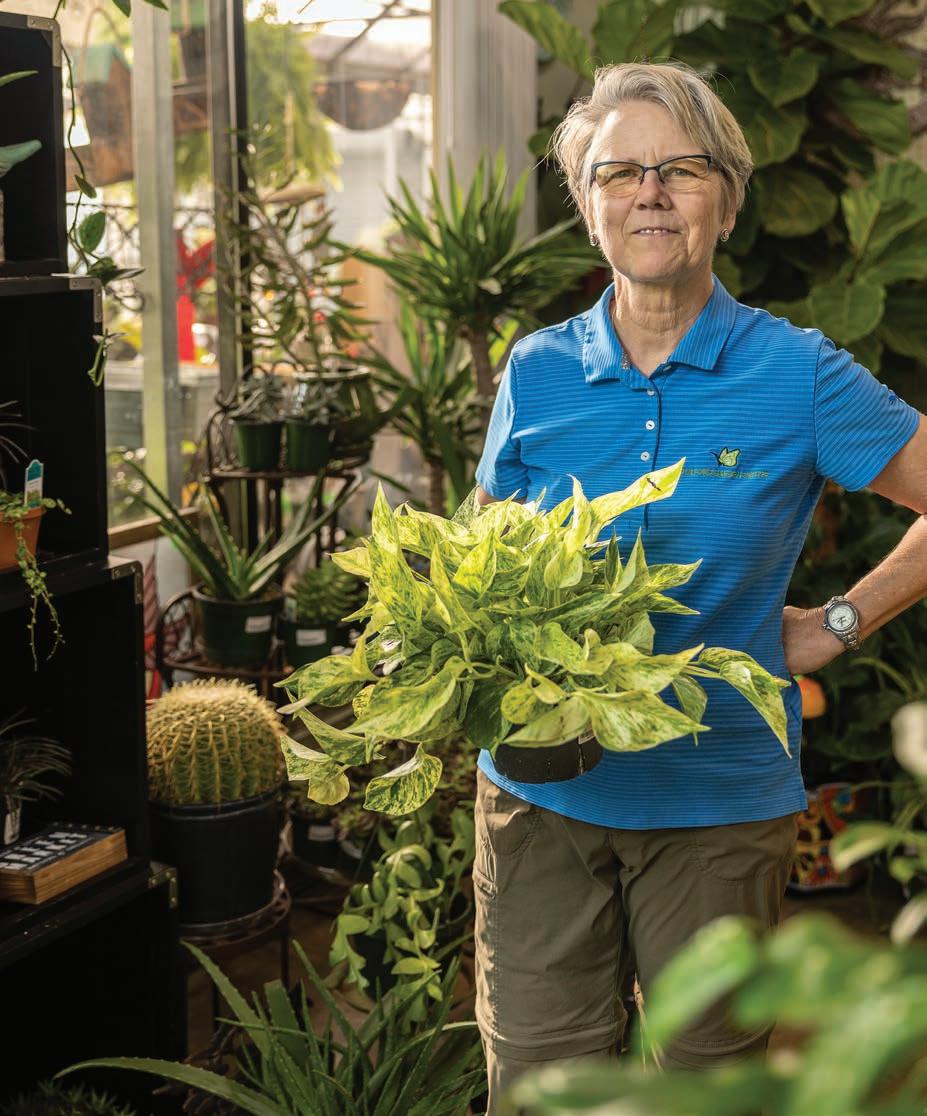
Voted Best Garden Center by News & Record readers for 2020, 2021 and 2022, this local gem recently completed the installation of a rain garden at Tanger Family Bicentennial Garden to handle stormwater runoff, demonstrating to homeowners that wet areas can be handled without simply piping the water off their property to become someone else’s problem.
Christina’s team is currently installing a bird garden at Guilford Garden Center. 701
After almost 16 years at UNCG and N.C. A&T State University, Dr. Kelly Graves left a tenured associate professorship to co-found and become executive director of the Kellin Foundation, a nonprofit providing mental health care for children and families with an emphasis on implementing integrated treatments proven to be effective.

“We focus our efforts on those who otherwise would not have access to care,” Dr. Graves states, “so that everyone has access to the treatment they need to support their health and wellness.”
As a partner with The National Child Traumatic Stress Network (NCTSN) for its award-winning expertise in community-based trauma recovery, the Kellin Foundation is undertaking a major relocation in 2023 to provide expanded mental health and substance use counseling, peer support and services navigation for people of all ages.
The Kellin Foundation believes that everyone can be part of the solution. “My oldest daughter, Alyssa, started one of the programs at the Kellin Foundation called Kellin Kids when she was 8 years old,” Dr. Graves says. “She wanted to create a volunteer mechanism for kids to show that no matter how big or small, all kids can make a difference.”

As founder and owner of Old North State Trust, Denis de St. Aubin has instilled in his team members to adhere to his family motto, handed down from his great-grandfather: “Take care of the clients. Take care of one another. Do everything above board and with honesty.” This is the cornerstone of the culture at Old North State Trust.
The textile industry originally brought the de St. Aubin family to North Carolina, with Denis visiting the family mills as a child. Revolution Mill, where Old North State Trust’s home office is, brings that rich history full circle.
He saw a need for independent trust services for families and began building a strong team of professionals that specializes in trust and estate administration, asset management, retirement solutions for individuals and businesses,



and legacy and financial planning.
“We are relationship-driven” Denis acknowledges. “As a fiduciary, we provide solutions to individuals, families, and businesses looking for local, specialized and personalized financial services, all in-house.”
The founder and chief practitioner of the premier medical spa and treatment center in the Triad, Marisa Faircloth, is known for her artistic less is more approach. The hallmark of her work and her workplace values for Restoration MedSpa include a natural look. She is a Master Level Injector with Allergan, among the top half of one percent (.05%) of injectors in the nation, and is consistently named to the Top 100 Best Injectors in America list.

While her ascent in the non-invasive cosmetic treatments space might feel a bit like a rocket (she opened only 7 years ago), Marisa’s current role has been carefully cultivated over a 40-year career in plastic surgery, dermatology, medical aesthetics, and weight loss. “I had the good fortune to work with some of the best plastic surgeons in the region early in my career,” says Marisa. “And as I watched the industry innovate over the years, I began to realize that less-invasive procedures are perfect for people who don’t want or need a drastic change to their appearance.”
Marisa is a published author, national trainer, and Forbes Speaker. Learn more about her at www.marisafaircloth.com or schedule a complimentary consultation with her practice at www.restorationmedspa.com.

For Greensboro native Patsy Smith, owner of Stitch Point on Friendly since 2014, one of her greatest joys is to see people leaving her shop with arms full of a project — and their heads and hearts happier than when they came in.
As a UNCG home economics education student in the 1970s, Patsy would often wander into Charlene Barham’s Knit Shop (the original name of Stitch Point) in the Quaker Village Shopping Center. “It was just luck,” she says, that led her into the career she’s enjoyed now for 50 years. “I didn’t even know I was being interviewed!”
While working at and eventually becoming owner of Stitch Point was not the job she dreamed about as a child, she can’t imagine having done anything differently for the last half-century and welcomes the daily opportunity to spend time with grandchildren who assist her in the shop.
Offering classes in knitting, crochet and needlepoint, Patsy’s emporium remains a fixture of Greensboro’s artistic community, a colorful cornucopia of quality yarns, needlepoint canvases, cross stitch fabric, threads, patterns and so much more.
“It feels like home because it is home,” Patsy says. Indeed, at Stitch Point on Friendly, it’s a family affair.
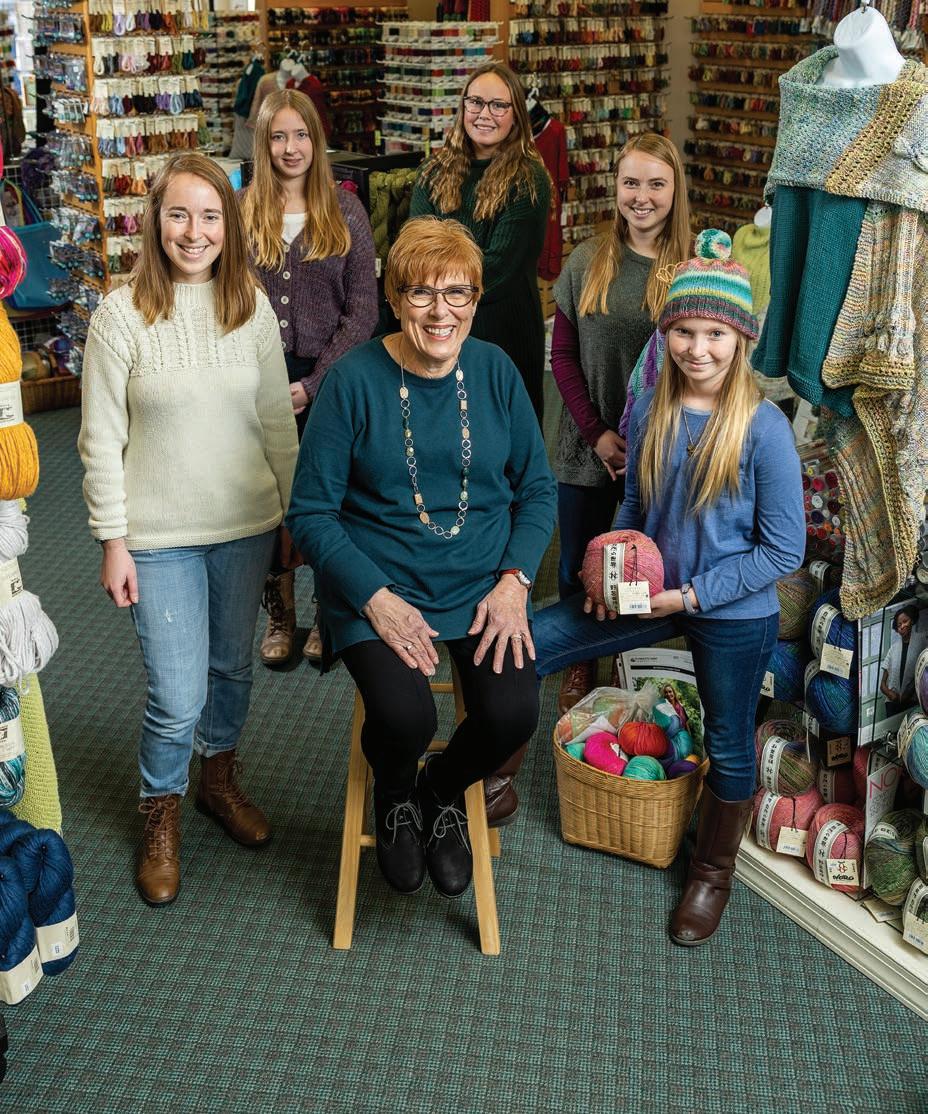
Although conscientious efforts are made to provide accurate and up-to-date information, all events are subject to change and errors can occur! Please verify times, costs, status and location before attending an event.

FOOD & FLOW. 10–11 a.m. Begin your day with a relaxing yoga practice and a mimosa. BYO mat and needed props. Tickets: $5. Elm & Bain, 620-B S. Elm St., Greensboro. Info: southendbrewing.com/event-directory.
TAPROOM TRIVIA. 7:30 p.m. Play trivia for prizes while enjoying craft brews. Free. Joymongers Brewing Co., 576 N. Eugene St., Greensboro. Info: joymongers.com.
RUN CLUB. 6 p.m. All levels are welcome to join Little Brother Brewing’s run clubs (or you can just walk!) and earn incentives such as beer and swag. Free. Little Brother Brewing, 348 S. Elm St., Greensboro. Info: littlebrotherbrew.com/runclub.
WINE WEDNESDAY. 5–8 p.m. Sip wine, munch on pizza and enjoy the soothing sounds of live jazz music. Free. Double Oaks, 204 N. Mendenhall St., Greensboro. Info: double-oaks.com/wine-wednesday.
CHINESE DANCING. 7–8:30 pm. Adults learn how to dance for Chinese candle dancing ceremonies and festivals. Free. Glenwood Recreation Center, 2010 Coliseum Blvd., Greensboro. Info: greensboro-nc.gov (click on “events”).

JAZZ AT THE O.HENRY. 6–9 p.m. Sip vintage craft cocktails and snack on tapas while the O.Henry Trio performs
with a different jazz vocalist each week. Free. O.Henry Hotel Social Lobby, 624 Green Valley Road, Greensboro. Info: ohenryhotel.com/o-henry-jazz.
MUSIC BINGO. 7–9 p.m. Play three rounds of music Bingo with DJ Mike Wawa. Free. Pig Pounder Brewery, 1107 Grecade St., Greensboro. Info: pigpounder.com/event-calendar.
BLACKSMITH DEMONSTRATION. 10 a.m.–4:30 p.m. Watch a costumed blacksmith in action as he crafts various iron pieces. Free. Historical Park at High Point Museum, 1859 E. Lexington Ave., High Point. Info: highpointmuseum.org.
Davie St., Greensboro. Info: greenhillnc.org/winter-show-2022.
PIEDMONT WINTERFEST. Times vary. Glide, twirl or stumble your way across the ice rink with friends and family at its new location. Closed Tuesdays. Tickets: $12. LeBauer Park, 200 N. Davie St., Greensboro. Info: piedmontwinterfest.com.

WILL MCBRIDE GROUP. 8 p.m. Rock, funk, blues and jazz intersect to create a night of music fusion. Tickets: $12+. In the Crown at the Carolina Theatre, 310 S. Greene St., Greensboro. Info: carolinatheatre.com/events.
WINTER SHOW. GreenHill Center for NC Art’s annual Winter Show continues featuring North Carolina artists’ works for purchase and viewing. Free. Greensboro Cultural Center, 200 N.
SONGS OF JOHN PRINE. 7:30 p.m. Billy Prine pays homage to his late brother. Tickets: 30+. High Point Theatre, 220 E. Commerce Ave., High Point. Info: highpointtheatre.com/events.
TREE TOSS. Watch formerly wild animals enjoy the unsold trees from Cranberry Tree Farm. Animal Park at
the Conservators Center, 676 E. Hughes Mill Road, Burlington. Info: animalparknc.org/events/treetoss.
STYX. 7:30 p.m. The renowned rock band brings its 2023 world tour to the Gate City. Tickets: $45.50+. Steven Tanger Center, 300 N. Elm St., Greensboro. Info: tangercenter.com/events.
DASH DUO. 7:30 p.m. Trumpeters David Dash and Mary Elizabeth Bowden perform with Belarusian pianist Polina Khatsko. Tickets: $20; $15 students. Watson Hall, 1533 S. Main St., Winston-Salem. Info: uncsa.edu/performances/index.aspx.
IMPROV 101. 6:30 p.m. Learn how to master the art of improv in a fourpart series of workshops. Tickets: $125.

The Idiot Box, 503 N. Greene St., Greensboro. Info: idiotboxers.com.
OPEN MIC. 6–7:30 p.m. The North Carolina Writers’ Network hosts an opportunity to share original works. Free. Scuppernong Books, 304 S. Elm St., Greensboro. Info: scuppernongbooks.com/event.
GEORGE LOPEZ. 7 p.m. The star of the self-titled ABC sitcom delivers a night of laughs. Tickets: $45.50+. Steven Tanger Center, 300 N. Elm St., Greensboro. Info: tangercenter.com/events.
ERIC BROWN & JUICE ADKINS. 8 p.m. Up-and-coming comedian Eric Brown and 8-year Triad veteran Juice Adkins deliver a night of laughs. Tickets: $10. The Idiot Box, 503 N. Greene St., Greensboro. Info: idiotboxers.com.
MARIO THE MAKER MAGICIAN. 7 p.m. All ages will enjoy a dazzling night or slapstick, robotics and magic. Tickets: $10. High Point Theatre, 220 E. Commerce Ave., High Point. Info: highpointtheatre.com/events.
MONSTER JAM. Times vary. Celebrate its 30th anniversary with an actionpacked motorsports experience for families. Tickets: $20+. Greensboro Coliseum, 1921 W. Gate City Blvd., Greensboro. Info: greensborocoliseum.com/events.
STAND-UP 101. 3 p.m. See if you have what it takes to be a stand-up comedian in this four-part workshop series. Tickets: $195. The Idiot Box, 503 N. Greene St., Greensboro. Info: idiotboxers.com.
JOHN CARDEN. 7:30 p.m. The UNCSA alumni performs a repertoire
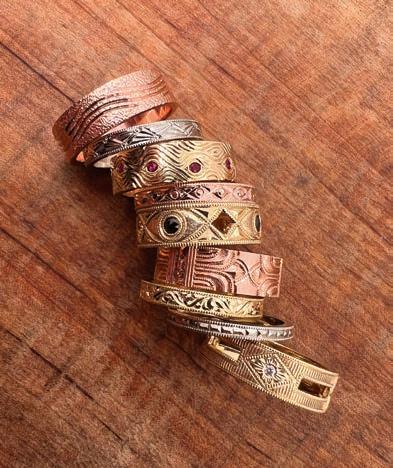
interior design • furniture • lighting • art • accessories 513 s elm st 336.265.8628 www.vivid-interiors.com



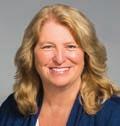





of musical theater and Broadway hits. Tickets: $20; $15 students. Watson Hall, 1533 S. Main St., Winston-Salem. Info: uncsa.edu/performances/index.aspx.
16




MLK MEMORIAL. 7:30 a.m. The Human Rights Commission hosts its annual Martin Luther King Jr. Memorial Breakfast, featuring keynote speaker Niketa Greene. Tickets: $20, in-person; free, online. Info: greensboro-nc.gov (click on “events”).
17
FANTASIA. 7:30 p.m. Philip Smith, former principal trumpet of the New York Philharmonic, joins UNCSA’s Watson Brass for a lively evening. Tickets: $20; $15 students. Watson Hall, 1533 S. Main St., Winston-Salem. Info: uncsa.edu/performances/index.aspx.
BY THE BOOK. 6–8 p.m. Greensboro History Museum hosts Richard Cox,


David Gwynn and Erin Lawrimore to discuss their book, North Carolina Triad Beer: A History. Trivia to follow. Free. Oden Brewing Co., 804 W. Gate City Blvd., Greensboro. Info: greensborohistory.org/events.

SHEN YUN. 7 p.m. Discover the mystique and beauty of China before communism through an artistic theatrical experience. Tickets: $90+. Steven Tanger Center, 300 N. Elm St., Greensboro. Info: tangercenter.com/events.
JAMES EHNES. 7:30 p.m. One of the most sought-after violinists dazzles with unfaltering musicality as he takes the stage with the Greensboro Symphony. Tickets: $35+. Steven Tanger Center, 300 N. Elm St., Greensboro. Info: tangercenter.com/events.
DINNER DETECTIVE. 6–9 p.m. Solve a murder at a mystery dinner show. Tickets: $69.95+. Greensboro-High Point Marriott, 1 Marriott Drive, Greensboro. Info: thedinnerdetective.com/greensboro/ murder-mystery-tickets-showtimes.
DREW DAVIS. 8 p.m. If self-deprecating comedy is your jam, don’t miss this standup show. The Idiot Box, 503 N. Greene St., Greensboro. Info: idiotboxers.com.
CATS. Times vary. Memories are made when Andrew Lloyd Weber’s recordbreaking musical comes to Greensboro. Tickets: $25+. Steven Tanger Center, 300 N. Elm St., Greensboro. Info: tangercenter.com/events.
JAILHOUSE ROCK. Celebrate the King’s birthday with this Carolina Classic film. Tickets: $7. Carolina











Theatre, 310 S. Greene St., Greensboro. Info: carolinatheatre.com/events.

FRANKIE BEVERLY & MAZE. 7:30 p.m. Enjoy an evening of classic American soul music. Tickets: $76+. Greensboro Coliseum, 1921 W. Gate City Blvd., Greensboro. Info: greensborocoliseum. com/events.
STEEL PANTHER. 8 p.m. Laugh, rock and sing along with this comedic band from Los Angeles. Tickets: $25+. Piedmont Hall at Greensboro Coliseum, 1921 W. Gate City Blvd., Greensboro. Info: greensborocoliseum.com/events.
TOBYMAC. 7 p.m. The contemporary Christian Singer brings “The Goodness” to the Gate City. Tickets: $17.25+.
Greensboro Coliseum, 1921 W. Gate City Blvd., Greensboro. Info: greensborocoliseum.com/events.
LUNAR NEW YEAR. 1–4 p.m. Celebrate the Year of the Rabbit with family-friendly performances and hands-on activities from Asian Pacific community groups across Greensboro. Free. Greensboro History Museum, 130 Summit Ave., Greensboro. Info: greensborohistory.org/events.

MOZART. 3 p.m. UNCSA faculty-artists celebrate the 267th birthday of Wolfgang Amadeus Mozart with a program featuring the composer’s chamber music. Tickets: $25; $20 students. Watson Hall, 1533 S. Main St., Winston-Salem. Info: uncsa.edu/performances/index.aspx.
THE LIES THAT BIND. 3 p.m. When three couples meet in therapy, sparks fly and marriages are tested in this stage play. Tickets: $20+. Van Dyke Performance Space, 200 N. Davie St., Greensboro. Info: eventbrite.com/e/the-lies-that-bindgreensboro-tickets-411643596077.
OUR HOSPITALITY. 7 p.m. The Silent Series returns with this Buster Keaton classic. Tickets: $7. Carolina Theatre, 310 S. Greene St., Greensboro. Info: carolinatheatre.com/events. OH
To submit an event for consideration, email us at ohenrymagcalendar@gmail.com by the first of the month



ONE MONTH PRIOR TO



Our area has a wonderful selection of independent schools with a variety of educational models. Look at what these schools have to offer and see what’s right for your child.




B’nai Shalom Day School is one of the oldest private day schools in Greensboro and the Triad’s only infant-8th-grade Jewish independent school. We foster academic excellence while maximizing each individual student’s potential. B’nai Shalom Day School helps develop students who are strong and confident, empathetic, and compassionate. We offer dynamic programming for all students until 5:30 PM to support a wide- range of childcare needs. Schedule a tour today to see why B’nai Shalom stands the test of time!
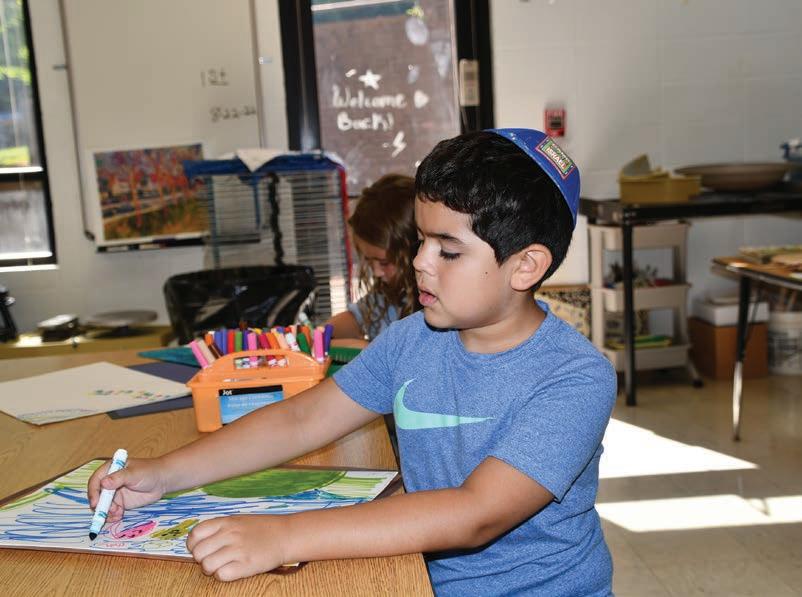
Bishop McGuinness Catholic High School’s primary mission is to develop students holistically to serve in a world in need of peace, love and justice. We encourage students through academic and co-curricular opportunities to excel personally, academically, spiritually, and to build their own unique mission in life.


Bishop McGuinness is fully accredited and a college preparatory high school that is widely recognized for high academic standards and the excellence of their graduates. Students are guided by an exceptional faculty and college counseling team, not only as they work towards college goals, but in all aspects of their experience at Bishop. We offer a full AP program, aviation STEM courses, and a thriving arts program with over 40 courses. We are minutes from Greensboro and have financial assistance and transportation available.

Please call the Admissions Office for your private tour. 336.564.1011 or kknox@bmhs.us 1725 NC






Greensboro Day School is a private, coeducational school with approximately 880 students, located on a beautiful 65-acre campus. We have earned a reputation for academic excellence by offering the best, most well-rounded educational experience in the Triad. Our dynamic academic program keeps students interested, active, and engaged. Academic challenge is matched with support from an expert and caring faculty, ensuring that every student is known as an individual.





Your child is like no one else, and their educational journey should be about unleashing their full potential ... about building integrity, independence, and initiative just as much as intellect.


At Greensboro Montessori School, we authentically engage each aspect of our students’ development — cognitive, social, emotional — and provide them with the skills and courage to grow into the people they’re intended to be. Our teachers personally know their students and intentionally prepare their curricula, classrooms, and community to meet each individual’s needs. Our alumni are a testament to our approach: 97% of our graduates say they are successful adults because of their Montessori education.

Visit gms.org to learn more and register for an upcoming Virtual Info Session.

Whether toddler or teen, your child is our curriculum.
New Garden Friends School is the Triad’s only Preschool-12th grade school built upon the long-held standards of exceptional Friends schools.

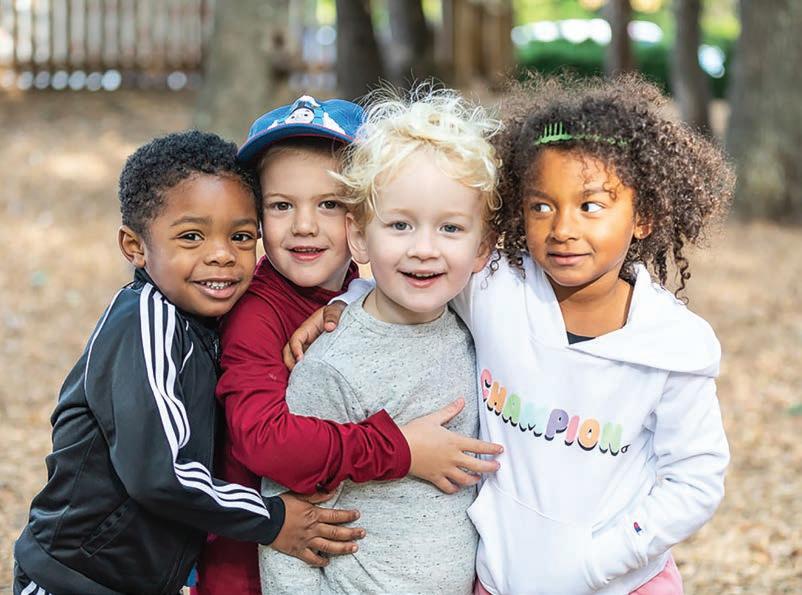
It all starts with learning to be a good friend. At NGFS, students are guided to appreciate the interdependence of community life and consider how their attitudes, words, and actions affect others. The practice of respect and inclusion, service toward others, and peaceful resolution of conflict are fundamental pieces of who we are.

NGFS students pursue intellectual growth within a culture of kindness. Serious scholarship is paired with the joy of inquiry and a commitment to listen deeply, communicate clearly, collaborate effectively, and think critically.

We invite you to visit our community, talk to our teachers, and listen to our students. Come see what a difference NGFS can make for your child.

The right school community can make all the difference.

2023-2024 school year application is now open - priority deadline is March 31st.

Since its founding in 1987, Noble Academy has empowered students in grades 2-12 with learning differences and attention difficulties to pursue their highest potential within a comprehensive, supportive educational environment. Their students are gifted, intelligent, artistic, athletic, and are simply seeking a place where their learning differences do not impede their academic and social growth. They serve students with a highly accredited full-day program where the five steps to Building Great Futures - the Noble Academy Way® - are interwoven throughout. But the real measure of difference is a faculty that works collaboratively with each student to develop an individualized and targeted plan to meet their specific learning needs. Noble has the experience, tools and, most of all, highly trained faculty to meet each student’s unique needs. To learn more, visit nobleknights.org.


Inspire a love of learning in each student, with the understanding that all students can learn, achieve, and succeed.





Develop an appreciation and respect for all of God’s creations.

Our world is changing every day. And so are the needs of K-12 education. At Wesleyan, we partner with parents to provide a solid foundation for their children built on God’s word, exceptional academics for every learning level and an unparalleled breadth and depth of student programming. The end result? Wesleyan students are equipped for the future and prepared to impact their world. At Wesleyan Christian Academy, we are developing leaders and influencers built to withstand the waves of change. 2022’s 83 graduates were awarded $6.8MM in merit-based scholarships with a 100% graduation rate and 14 college athlete commits.


Kindergarten Preview Day: Sunday, January 8, 2023 from 3 to 5 p.m. To apply or schedule a tour, visit www.wesed.org/admissions/visit

• 2022-2023 Enrollment: 1275

• Serving 6 wks to 12th grade
• Student / Teacher Ratio: 19:1
•
•
•


Westchester Country Day School is an independent, college preparatory school where experienced and enthusiastic faculty support each child, every day in growing toward excellence in moral character, academics, the arts and athletics. Pre-K through 12 students gain the knowledge and skills needed to pursue higher education and future goals while developing an appreciation for learning as a lifelong joy. Arts, athletics, technology, character and service-learning are woven into the academic curriculum, created by faculty mentors who facilitate a challenging yet nurturing and dynamic classroom environment. The 53-acre scenic campus is tucked away but is in close proximity to most of the greater Triad area.


100% college acceptance
7:1 student-to-teacher ratio
Faculty average 18 years of experience
Private music lessons and theatre program

Athletic teams in 10 sports Bus and after-school care are available
The best way to discover what Westchester has to offer your child is to see it for yourself. Visit our website or call and schedule a tour today.























First Choice: Winter Show 2022 & Collectors’ Choice: Winter Show 2022
At GreenHill Center for NC Art Thursday & Saturday, December 1 & 3, 2022






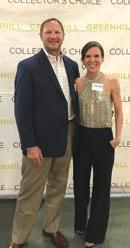






Photographs by Devin Lane & Linda Spitsen


What do you do when you lose what matters most? Who are you when the very people or things that define you are taken away?


Burning Faith is the story of a congregation that loses its church, but it’s not so much a story about loss as it is about discovery. A parish loses a building but finds its faith, individuals become a community, and an ambitious minister loses his legacy only to find his purpose.

Available on Amazon December 1st
When my Pennsylvania Dutch mother went into the kitchen, forget about “a little of this and a little of that.” Salt was plunked into the pot using three fingers and her thumb. When she seasoned her iconic chicken’n’dumplings with black pepper, you could smell it two rooms away. A pinch was something I got for saying the wrong thing at the wrong time. And yet she was a marvelous and adventuresome cook. And I, the apple of her eye, landed not far from the tree.
After marrying my high school sweetheart at 19, I learned to cook because Anne, my bride, had an 11 o’clock class. By the time she got home, the house would be redolent with my inimitable Sicilian spaghetti sauce. (The secret was too much of everything but ground beef, which we couldn’t afford.) “Garlic is a flavoring,” she’d say, “not a vegetable.” Or, “Tabasco is not your — or my — best friend.” It was much later in life that I actually became a reliable cook.
Having lost my job in 2009, I got on as, first, a dishwasher, and then a backline chef, at Print Works Bistro. There, I learned some restraint and how to follow a recipe. Nowadays, I, in fact, do the lion’s share of cooking, with Anne, by far the superior chef, often putting me to shame. Maybe that’s because I haven’t lost my whoneeds-a-recipe spirit and, like Mom, still think exact measuring is for sissies.
Carb-conscious, we go on and off the Keto diet — the one where, counterintuitively, you lose weight eating butter, heavy cream, eggs, bacon, cheese and anything else loaded with protein and saturated fat. Meanwhile, we bid adieu to our old friends, sugar, wheat flour and potatoes — which allegedly trigger weight gain and speed the onset of diabetes.
Whatever. Any diet that embraces pork rinds and favors whiskey over beer is fine with me.
Still, we missed the comforting carbs of waffles, pancakes and biscuits for breakfast. So one Sunday morning while Anne slept in, I decided to surprise her with Keto-compliant crêpes. After browsing a dozen or so gluten-free recipes online, all requiring exotic ingredients (tapioca, millet, sorghum flour, potato starch and what the hell is teff?), I started rummaging around in our pantry. Anne had bought some almond flour and coconut flour that she baked into marvelous cakes, so into a bowl went a quarter cup each. I found some brown rice flour and white rice flour, so two more quarter cups were tossed into the mix. I had no idea what xanthan gum was, but had seen it online and we had plenty, so in went several heaping tablespoons. After beating eggs and milk and butter together, I added the ersatz-flour concoction and ZAP!
The result was a thick slurry that I could have picked up with the immersion blender and carried to the compost heap. And that’s probably what I should have done. Worried that my little handheld appliance might short out or be absorbed by the blob, I poured in more milk, some cream, water. RRRrrrrr. RRRrrrrr. RRRrrrrr.
But the blob simply grew and started wiggling threateningly.

I dumped it into a bigger bowl and took a wire whip to it with the idea of beating it into submission. I doused it with more and more liquid until the blob loosened up, no longer adhering to what I was whipping it with. I extracted a hunk from the quivering mass and tossed it in the frying pan. Even after flipping it, the gelatinous glob refused to flatten. When I pressed down on it, the blob squirted a gob of creamy stuff at me.
Not yet willing to give up, I cranked up the waffle iron, thinking of it as a submission chamber. The blob hissed. It sizzled. And made fairly decent waffles! Especially when served with ice cream and chocolate syrup.
Mom would have been proud. OH
O.Henry’s contributing editor, David Claude Bailey, is known for his kimchi milkshakes.
Too much of everything might result in something edible



